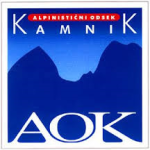First ascent of Cerro Kishtwar’s East Face
“The greater danger for most of us lies not in setting our aim too high and falling short: but in setting our aim too low, and achieving our mark.” Michelangelo
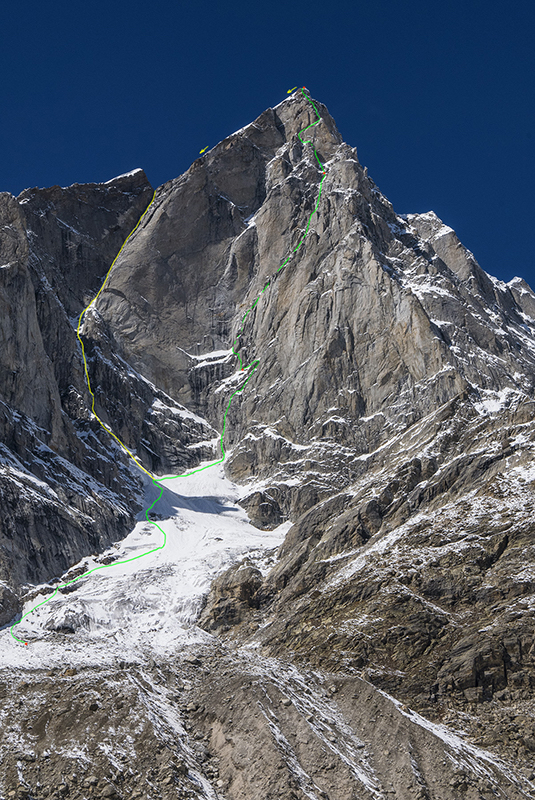
First ascent of Cerro Kishtwar’s East Face via new route Light before wisdom (6173 m) (foto: Marko Prezelj)
In the fall of 2014, during the ascent of Hana’s men, Marko Prezelj took a picture of an exceptional accumulation of mountains in eastern Kishtwar. Of all the mountains in the photo, the black pyramid of Cerro Kishtwar (6173 m*) stood out the most. I was intrigued enough to start thinking about going there.
Before Kashmir became officially closed to foreigners, the area had been “claimed” by British mountaineers. It is no wonder that they have been involved in all attempts and ultimately also in the first successful ascent of Cerro Kishtwar.
Before they gathered the courage and tried to climb Cerro Kishtwar, they had summited the nearby peaks. In 1983, Stephen Venables and Dick Renshaw climbed the north face of Kishtwar Shivling (5935 m) in pure alpine style [1, 2]. In 1988, Roger Everett and Simon Richardson made the first ascent of Chomochior (6278 m*) along the west ridge [3].
The first to stand below the north-west face of Cerro Kishtwar were Mick Fowler and Mike Morrison (in 1989) [4]. However, they could not accomplish anything more than inspecting possible routes of ascent.
The first real attempt to climb this mountain was made in 1991 by Brendan Murphy and Andy Perkins [5]. They chose a visionary route up the middle of the north-west face and managed to climb to 100 meters below the summit. They were climbing in “capsule style”, and spent 17 days on the wall.
In 1993, Mick Fowler returned to the base of the mountain together with Stephen Sustad. They chose to climb up a system of ice runnels in the left part of the north-west face. The route leads to a notch on the north ridge, from where the British continued along the north-east face to the north peak. The neighbouring south peak appeared to be higher, and hence traversing there was inevitable.
This was also the last year when it was possible to obtain a climbing permit for this part of India. Alpinists officially revisited the area only in 2011. That year, the Swiss Denis Burdet and Stephan Siegrist, the Austrian David Lama, and the American Robert Frost climbed a new mixed route on the right side of the north-west face of Cerro Kishtwar, which leads to the south peak [4].
All the ascents and attempts on Cerro Kishtwar were made from the Haptal glacier, which lies on the north-western side of the mountain. The valley on the opposite side of the mountain has not seen a lot of visits from alpinists in the past. In 2013 it was visited by Mick Fowler and Paul Ramsden, when they accomplished the first ascent of Kishtwar Kailash (6451 m) [7]. In the summer of 2015 the area was also visited by a Swiss expedition which intended to climb on Chomochior [8].
In addition to Marko’s enthusiasm about the region and his photo, Mick’s photo of Cerro Kishtwar and the neighbouring Chomochior, which he took while climbing on Kishtwar Kailash [9], was convincing enough that on October 10th, a group of people met in Delhi: Hayden Kennedy (from the USA), Manu Pellissier (from France), and Marko Prezelj and Urban Novak (both from Slovenia) [Photo_9].
After the inevitable dealing with formalities and purchase of delicacies [Photo_1], we took a comfortable van and drove to Manali that very evening, where we met the owner of our agency Above 14,000ft, Kaushal Desai [10].
We spend the next two days driving along an extremely picturesque but also exposed road [Photo_2] to the town of Gulabgarh, where we started a four-day trek to our base camp. The first two days we walked along a quite populated trail towards the village of Machail [Photo_3], where a famous Hindu temple stands. The second half of the hike to base camp led us through the exceptionally colourful Darlang Nullah valley [Photo_4, 5], where there are no more permanent settlements, only occasional pasture huts, which are used by shepherds during the warmer summer months.
In addition to outstanding natural scenery, the eastern Kishtwar region is also interesting from a cultural point of view, since three religions interweave here: Buddhism from the north, Hinduism from the east, and Muslim culture from the west.
Our base camp was set up at the mouth of the Chomochior valley [Photo_6]. Unfortunately our mules, or more precisely their guides, could not find a pass over the last moraine. Thus, out of necessity, our first acclimatization was actually doing the work of our mules and carrying the equipment to the base camp area, which was a half an hour away. Obviously the Swiss must have succeeded in hiring mules which had been able to cross the “obstacle,” because in the vicinity of the base we could find a lot of mule droppings.
After a day of rest [Photo_7], we began to explore access to the foothills of the eastern aspects of Cerro Kishtwar and Chomochior [Photo_10]. After a three-hour long and not very pleasant hike up the valley, we set up a tent which represented our ABC on a small sand dune in the middle of a glacier covered with stones and rocks [Photo_11]. Before an expected deterioration of weather which was to last for a few days, we managed to examine the possibilities of ascent on Chomochior and Cerro Kishtwar [Photo_12]. Our impression was that there was very little snow and ice on the faces, especially the lower halves which were completely dry. In anticipation of improvement regarding the snow conditions after the predicted precipitation we returned to base camp [Photo_13].
At an altitude of 3900 metres, where we had our base camp tents, it rained and snowed between 21 and 23 September [Photo_14]. After shovelling 30 cm of snow on the morning on 23 September, we started to relax and play cards, but unfortunately the game was soon suspended because of impending floods. From the steep eastern slopes just above base camp, the rain flowed in waterfalls to the plain near the camp. Only a mound of shovelled snow around the base camp ensured that most of our tents remained dry. Manu did not have such luck; he became homeless due to flooding of his tent. In the coming hours we dug drains and built dikes [Photo_15], all in order to protect the rest of our camp from the worst. By the end of the day, we managed to establish a branched and sophisticated drainage system between the tents [Photo_16, 17], which had ensured that the water level of the threatening lake lowered.
On 26 September, the situation in the mountains and in our heads stabilized to such extent that we began the planned ascent of Chomochior. We went up to ABC [Photo_18], where we were greeted by a broken tent and wet equipment [Photo_19]. With a little improvisation, following the example of the idol from my youth, MacGyver, we managed to reconstruct the tent with broken poles and to dry the wet equipment in the afternoon. Unfortunately, due to chest pain Manu decided to descend to base camp. He was accompanied by our guide Bagwal and cook’s assistant Betoo, who had helped to carry the equipment to the ABC that day.
The essence of successful acclimatization is not only a sufficient number of red blood cells—perhaps psychological aspect is even more important. A head which is prepared to deal with current circumstances and environment will—when this is significant and necessary—push a tired body forward. And the ascent of Chomochior was precisely that. Psychological preparation. Anxiously expecting what the next day would bring, we fell asleep that evening under a gentle snowfall, and woke up on a quiet, clear morning.
From ABC onwards we broke trail through deep snow [Photo_20]. Due to the difficult conditions [Photo_21] we were not as fast as we had initially expected. During a spell of snowfall we set up the first bivouac in an excavated flat area on a broad saddle between Cerro Kishtwar and Chomochior. Once again we fell asleep while it was snowing and woke up to a cold morning [Photo_22]. Due to the impressive environment [Photo_23] and a lovely sunrise, the departure was postponed to later in the morning [Photo_24]. From the saddle we were looking for the easiest way along the south ridge of Chomochior [Photo_25, 26, 27, 28, 29]. In the upper part the ridge became exposed and in places also technically demanding [Photo_30, 31]. We made three short rappels to bypass sharp gendarmes [Photo_32]. By the evening we had climbed up to the end of the snow-covered rocky ridge [Photo_33], and set up a second bivouac at a height of approximately 5900 metres [Photo_34]. The next morning we set off towards the peak without any bivouac equipment [Photo_35], and we reached it, in favourable conditions, around eleven in the morning [Photo_36, 37]. Throughout the climb from the second bivouac, we excitedly admired the outstanding scenery of peaks, which was dominated by the neighbouring Cerro Kishtwar. Mainly due to the spectacular shape of it, the powerful desire to climb this striking mountain finally matured within us during our climb on Chomochior [Cerro Kishtwar got its name precisely because of its spiky form, which is highly reminiscent of the Patagonian peaks]. We returned that same day by rappelling and descending down the eastern slopes back to the ABC [Photo_38, 39, 40], where we dried and inspected the equipment the next day, and in the afternoon descended to the base camp [Photo_41, 42].
During the days of climbing on Chomochior we were wondering how our friend Manu was doing. We were extremely happy when he came to meet us from base camp, because he was concerned about the conditions and the changing weather. His chest pain had disappeared after two days, and while we were climbing on Chomochior, Manu did not just sit in the base camp; together with Bagwal and Betoo he made acclimatization ascents on two five-thousanders above base camp. This meant that he, too, was ready to climb on our main goal. Since he had been deprived of climbing Chomochior, his motivation was even greater. He described himself as a bullet eager to be shot. 🙂
Following three days of rest, we were back on our way to the ABC, where we prepared and inspected all equipment. In the afternoon, we continued the approach under the east face of Cerro Kishtwar in cloudy weather and a light whirl of snowflakes [Photo_43].
Initially, we quite seriously examined the north-east face of Cerro Kishtwar. The main finding was that the face offered a number of possible ascent routes, but the view from Chomochior had revealed that it was covered by a large amount of fresh snow [Photo_39]. As a result of its orientation, during this time of year the face received almost no sun, so we did not count on any major changes that would improve the conditions during our rest in base camp. The alternative was the east face. Since this face is steeper than its neighbour, and because morning sun reaches the wall when the sky is clear, we expected less fresh snow and thus more favourable conditions for climbing.
On 4 October, while it was snowing, we set up two small tents under the east face. The snowfall subsided during the night [Photo_44]. In the morning we had to make a two-hour approach to the face, which on that day appeared to be heavily covered in snow. The days of uncertainty ahead and the technically challenging wall above us put some pressure on the somewhat younger and thus a little less experienced part of the team. We started to shift our gaze towards the left, where a prominent couloir offered a little more feasible route of ascent. In those moments of doubt and hesitation, Marko showcased why he is what he is in alpinism. Some positive provocation and motivational “insults” were enough to erase our doubts and fears of the unknown, and to direct our attention solely to the intended route.
On the first day we mainly rock-climbed almost 300 metres of the wall. The difficult terrain and evening snowfall did not allow us to progress quickly, but we were not concerned with speed. We climbed one pitch at a time, unburdened by the final result [Photo_45, 46, 47, 48, 49, 50]. In the evening we managed to climb another two rocky pitches [Photo_51, 52], and in the snow below them, we dug a narrow ledge on which we were able to squeeze our two little tents [Photo_53]. The night was “comfortable” and the sky was clear. 🙂
We woke up to a clear morning, and additionally warmed-up by climbing up the two ropes fixed the previous evening [Photo_54]. We climbed the most precarious—in the sense of “does it go?”—part of the route. We continued to climb the steep and softened ice corroded by sun [Photo_55, 56], which led us to four pitches of a long ramp of hard ice. The ramp ran into a branched system of corners. About half way up these corners, where steep ice climbing and mixed terrain interchanged [Photo_57], we were caught by the night. Because in the darkness we were utterly unable to find a suitable place for a bivouac, we climbed until late at night. At two o’clock in the morning after gaining a total of about 600 metres of elevation, we crawled into our sleeping bags on a small ledge dug into steep snow [Photo_58]. That night was a little less “comfortable”. Luckily for us, it lasted for a short time, although it appeared longer. The sky was clear. 🙂
Manu was again the one who was the most happy about the new morning [Photo_59], because he had only brought a super-light sleeping bag for “summer camping by the seaside” [Photo_60]. A wide crack [Photo_61] and a chimney with a steep ice [Photo_62] brought us to the point where the route ahead became less clear. The exit chimney on the left was not what we had hoped it was. It appeared to be two difficult pitches where we would have probably needed to employ some aid climbing skills to be able to reach the summit slopes. We were not too thrilled by the possibility. A diagonal traverse towards the right [Photo_63] led into the north-east face, and we knew that we could expect a lot of unpacked snow there. In the end, the decision was taken by the climber who was in lead at the time: Hayden. Soon he set up an anchor [Photo_64] on the north-east face covered in a heavy blanket of snow, and shrugged: “I do not know if this goes??”
“Give me the gear!” was Marko’s response. A man of action. Thirty metres of complex slabs covered with piles of fresh snow [Photo_65], and still a raised thumb followed. We all just laughed [Photo_66]. Powdery snow made sure that the climbing continued far into the night [Slika_67]. The exit chimney ended at the last anchor in the rock below the cornice, about twenty metres from the summit of Cerro Kishtwar. Manu and Marko set up their tent on the very top, and Hayden and I set up ours just a metre lower [Photo_68].
Obviously, the view from high peaks cannot be bad. The view from Cerro Kishtwar was not bad as well [Photo_69]. Although, for some it might be perhaps a little disappointing in terms of its monotony. The only thing that could be seen from the summit were spectacular peaks in any direction. And it was our privilege that we probably stood on top [Photo_70] of the most spectacular one among them (a purely subjective evaluation).
We descended from the summit [Photo_71] along a couloir in the left part of the east face, mostly by rappelling [Photo_72]. In the upper part we were surprised by the fact that there was no snow/ice there. Owing to three days of clear weather, the descent in the lower part was more like canyoning [Photo_73] than descending an ice route on a six-thousander. In all 1,200 metres, we could only set up one Abalakov anchor, all the other anchors were set in rock, one of them with ice screws. We were again on the verge of laughter. “We would have fuc… ourselves so much, if three days ago we had actually pooped our pants and would have decided to climb on this line… ” After a successful descent from the summit, the view on the wall from below revealed very different conditions. We caught the perfect time for climbing, because after we descended, the bottom part of the face had no more ice which had enabled us—in spite of its questionable quality—a successful ascent [Photo_74].
We reached base camp that same night [Photo_75]. There we almost bumped into the mules, which had apparently finally managed to find their way to the camp. The next day we cleaned up base camp, and a day later, on 10 October, we started a quick descent back into the “synthetic” world. In two days we descended 60 km to the road in Gulabgarh, and the next night, after 18 hours of driving on a mainly bumpy unpaved road, we arrived in Manali. That was followed by an overnight ride to Delhi and then our flights home. We left the base camp and the mountains above it so quickly that our thoughts and feelings remained there.
Fourteen days after having returned home, during those moments when I can detach myself from the world, which after a one-month escape to the mountains sucks you right back into itself, the first thought that comes to my mind is what great time we had. The climbing was excellent, the timing was Swiss-like, the adaptability to conditions and environment chameleonic, the environment pristine, the people modest, but the relationship that we had built with each other during that month surpasses it all. In the end this is the most important, because the friendship with cheerful Manu, alpine master Marko, and climbing enthusiast Hayden has ensured that a similar story to the one above might be repeated in the future.
FACTUAL INFORMATION:
Cerro Kishtwar and Chomochior lie in the eastern Kishtwar (Indian Kashmir Himalayas). *We measured the altitudes of their peaks by using the DeLorme system [12].
We met in Delhi on 10 September 2015. The base was set up on 17 September at the mouth of the Chomochior valley. The grassy plain at the height of 3900 metres, under a 20-metre granite wall (where the Swiss expedition equipped a few sport climbing routes), offered us a more or less safe shelter for those 22 days which we spent in this valley. We left India on 16 October 2015.
Climbing part of the team: Manu Pellissier (FRA), Hayden Kennedy (USA), Marko Prezelj and Urban Novak (SLO) [Photo_9 from right to left].
Indian part of the team: guide Bagwal Thakur (India), cook Amer Gurung (Nepal), federal officer Mohan Lhak (India), and cook’s assistant Bhupender Kumaar Thakur – Betoo (India) [Photo_8 from right to left].
The agency which skilfully provided all permits and ensured efficient logistics: Above 14000ft, the owner is Kaushal Desai [10].
In the available time, and in quite variable weather and relatively challenging conditions, we managed to climb two new routes:
– Chomochior (6278 m*): south ridge, D+, 1400 m. A new route and the third ascent of the summit. Ascent accomplished between the 27 and 29 September 2015; climbers were Marko, Hayden and Urban. Descent by rappelling and descending along the eastern slopes to the lower third of the mountain, from where we descended along the ascent route [Photo_76, 77].
– Cerro Kishtwar (6173 m*), east face: Light before Wisdom, ED+ 1200 m (5.11, WI6, M6, A2). A new route and the third ascent of the summit. The route, which we named Light before Wisdom, was climbed between 5 and 8 October 2015 by Marko, Manu, Hayden and Urban. Descent along the southern slope to the notch which meets the east couloir, along which we rappelled to the foot of the east face [Photo_78, 79].
At the end, all members of the expedition described by the above report would like to thank all who have in any way supported us in our alpinistic endeavours. Thank you for having co-created a story which has so intensely marked and enriched our lives.
REFERENCES:
- Venables, S. AAJ, Climbs And Expeditions. Asia, India—Jammu and Kashmir, Kishtwar Shivling 1984; Available from: http://publications.americanalpineclub.org/articles/12198428002/Asia-IndiaJammu-and-Kashmir-Kishtwar-Shivling.
- Planetmountain, Kishtwar: three Himalayan first ascents by Siegrist, Senf and Abegglen. 2014; Available from: http://www.planetmountain.com/english/News/shownews1.lasso?l=2&keyid=42216.
- Richardson, S. AAJ, Climbs And Expeditions. Chomochior 1989; Available from: http://publications.americanalpineclub.org/articles/12198923501/Chomochior.
- Griffin, L. Burdet, Lama, Siegrist climb Cerro Kishtwar. 2011; Available from: https://www.thebmc.co.uk/burdet-lama-siegrist-climb-cerro-kishtwar.
- Macnae, A. AAJ, Asia, India–Kashmir and Jammu, Cerro Kishtwar Attempt. Asia, India–Kashmir and Jammu, Cerro Kishtwar Attempt 1992; Available from: http://publications.americanalpineclub.org/articles/12199224004/Asia-IndiaKashmir-and-Jammu-Cerro-Kishtwar-Attempt.
- Fowler, M., The One That Nearly Got Away. The Alpine Journal, 1994. 99: p. 48-53.
- Griffin, L. Fowler and Ramsden make first ascent of Kishtwar Kailash. 2013; Available from: https://www.thebmc.co.uk/fowler-and-ramsden-make-first-ascent-of-kishtwar-kailash.
- Expédition 2015 Kishtwar – Darlang Nullah. 2015; Avaliable from: https://www.facebook.com/Exp%C3%A9dition-2015-Kishtwar-Darlang-Nullah-301837630019536/.
- Fowler, M. AAJ Climbs And Expeditions. Kishtwar Kailash, Southwest Face 2014; Available from: http://publications.americanalpineclub.org/articles/13201212848/Kishtwar-Kailash-Southwest-Face.
- Above 14000ft. Available from: http://www.above14000ft.com/.
- Wikipedia. Machel Mata; Available from: https://en.wikipedia.org/wiki/Machel_Mata.
- We were recieving weather forecast via the Delorme system from Yann Gierzendanner and Monika Planinc. We did not use a satellite phone.
The report written by: Urban Novak

Grocery shopping before the departure (foto: Marko Prezelj)
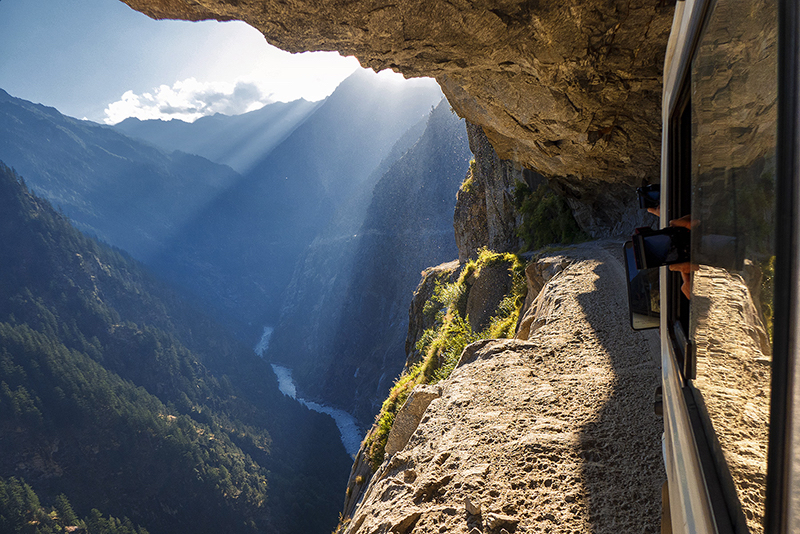
Spectacular and exposed drive to Gulabgarh town (foto: Urban Novak)
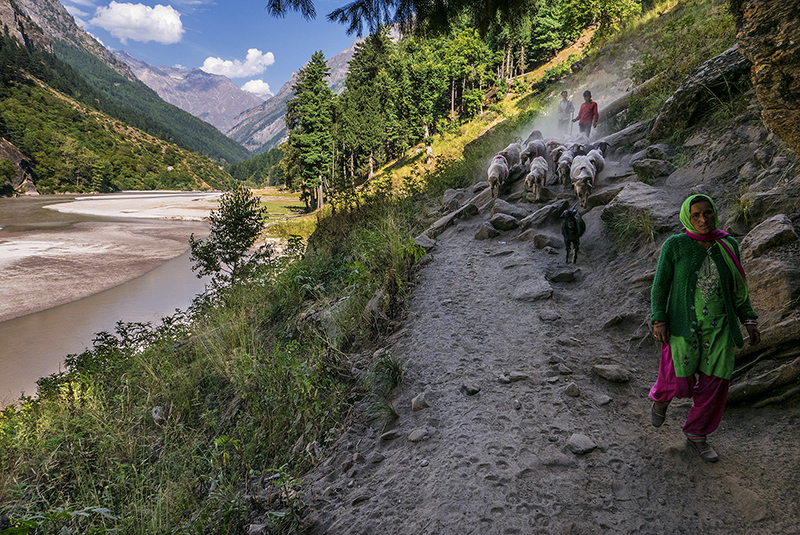
First two days of walking to Machail village on a pretty populated path (foto: Marko Prezelj)
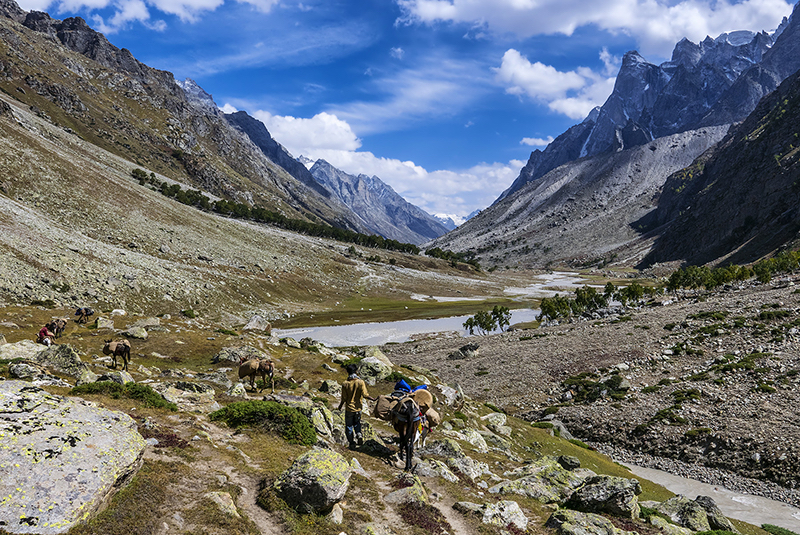
Second half of the trek to the place for base camp down the colourful Darlang Nullah valley (foto: Marko Prezelj)

Second half of the trek to the place for base camp down the colourful Darlang Nullah valley (foto: Marko Prezelj)

Base camp at the head of Chomochior valley (foto: Marko Prezelj)

Active rest day (foto: Marko Prezelj)
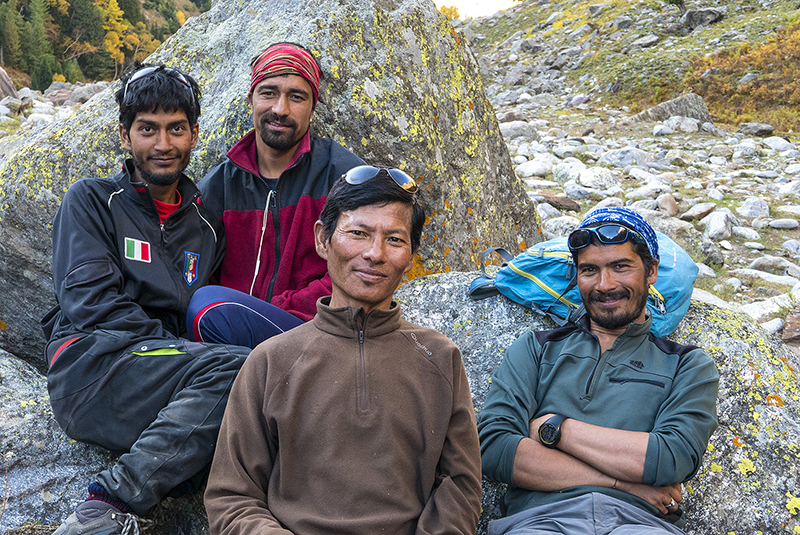
Staff: (from left to right): cook’s assistant Bhupender Kumaar Thakur – Betoo , liaison officer Mohan Lhak (both India), cook Amer Gurung (Nepal) and guide Bagwal Thakur (India) (foto: Marko Prezelj)
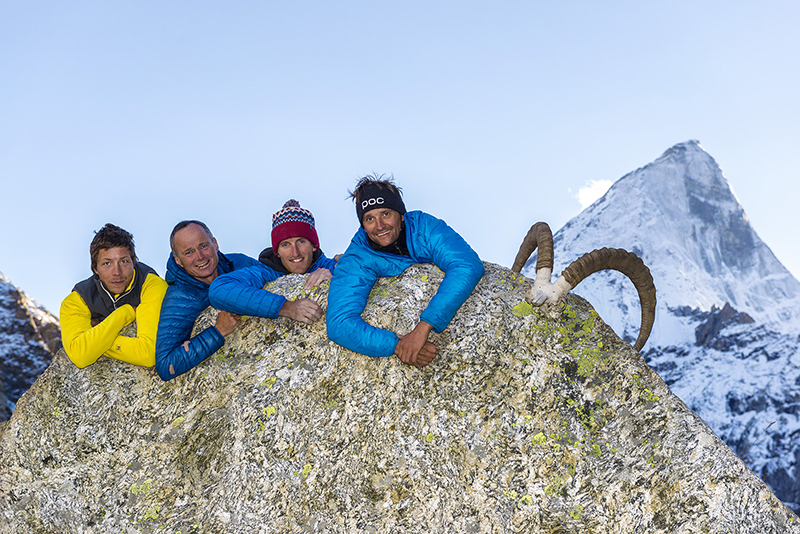
Climbing team: Urban Novak in Marko Prezelj (SLO), Hayden Kennedy (USA) and Manu Pellissier (FRA) (foto: Marko Prezelj)

Exploring access to the base of Cerro Kishtwar’s and Chomochior’s East Faces (foto: Marko Prezelj)
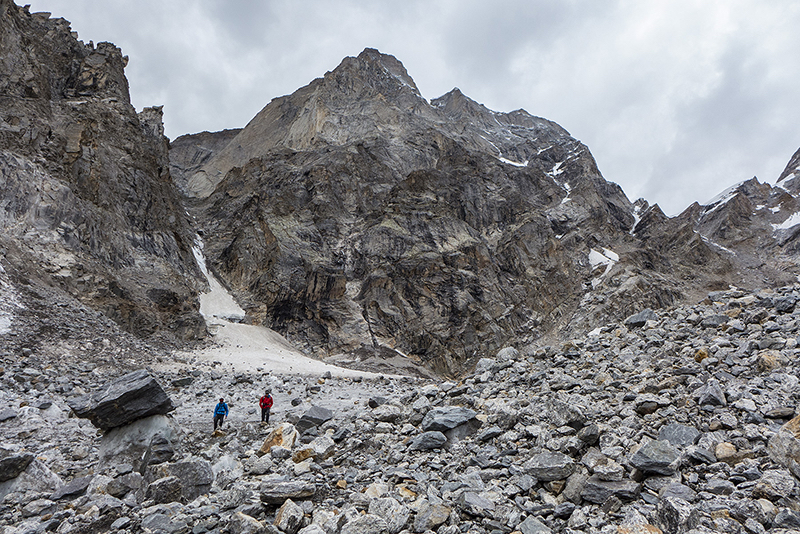
Scouting an ascent options on the east aspects of Cerro Kishtwar and Chomochior (foto: Marko Prezelj)

ABC was set up on a small sand dune in the middle of a glacier covered with stones and rocks (foto: Marko Prezelj)
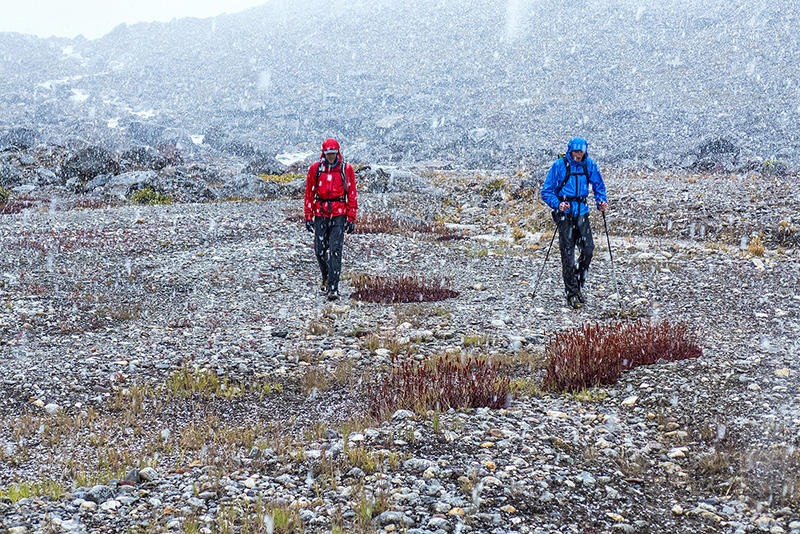
Snowfall on the way back to base camp (foto: Marko Prezelj)
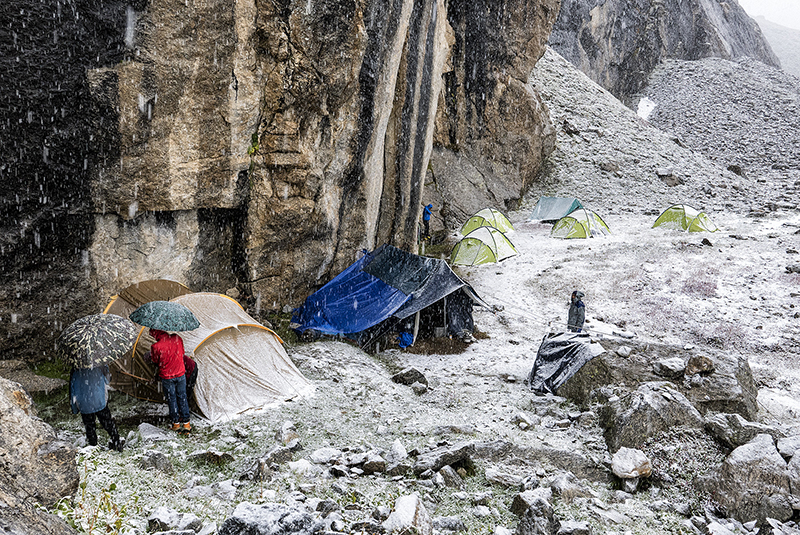
Changing rain and snow between 21st and 23rd of September (foto: Marko Prezelj)
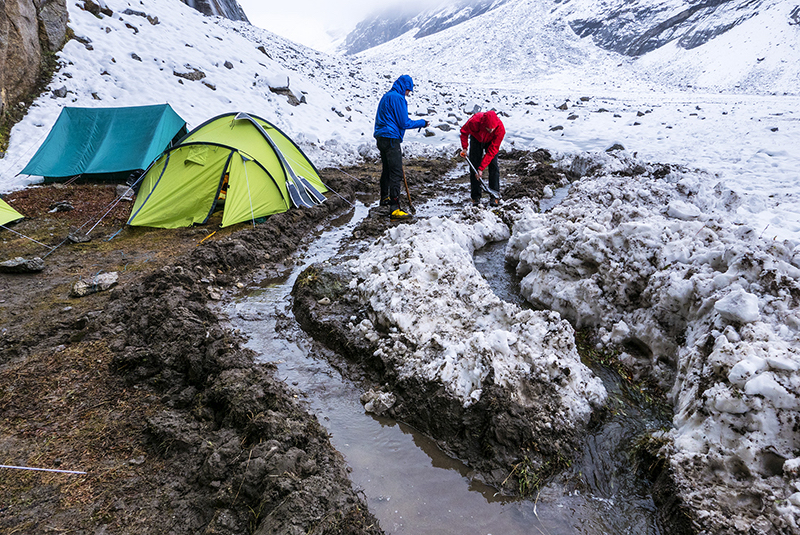
Digging drain moats and building mounds to save the base camp (foto: Marko Prezelj)
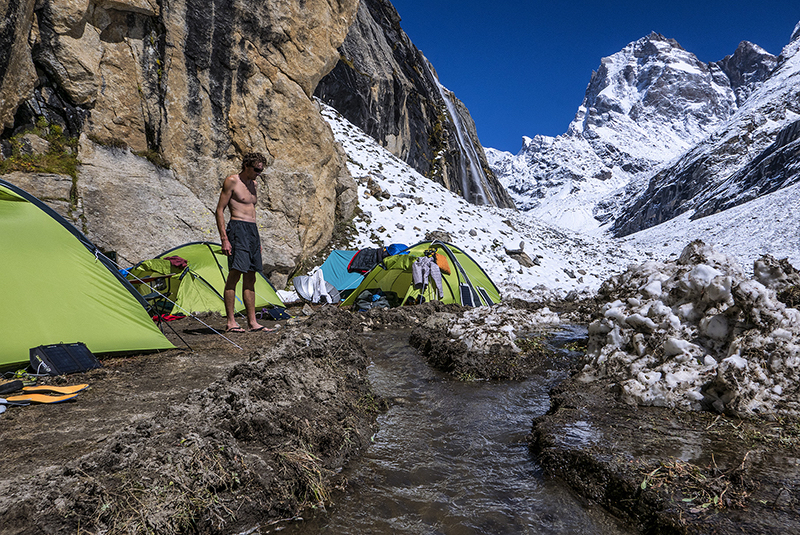
Sophisticated drain system of municipal water between the tents (foto: Marko Prezelj)
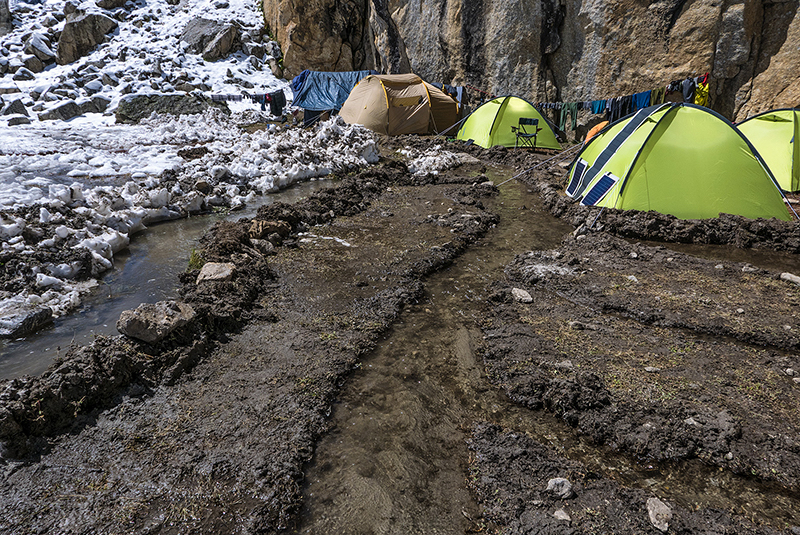
Sophisticated drain system of municipal water between the tents (foto: Marko Prezelj)
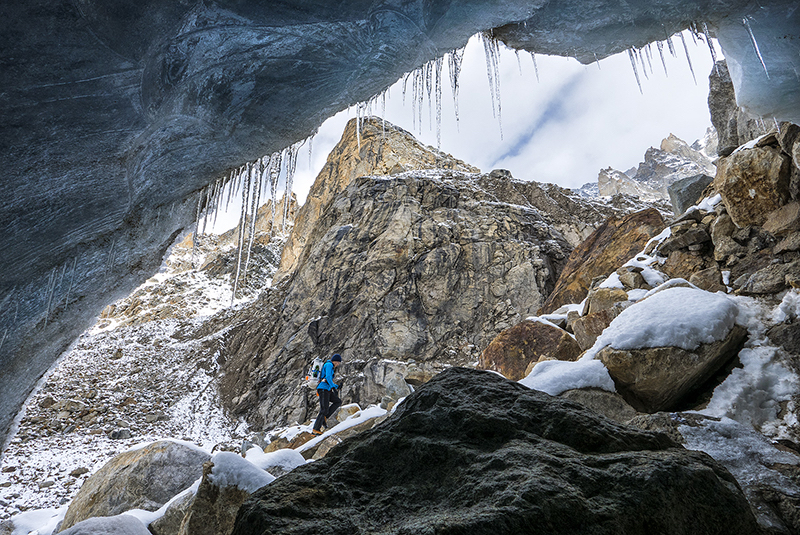
The conditions in the mountains and in our heads stabilized to such extent that we began the planned ascent of Chomochior (foto: Marko Prezelj)
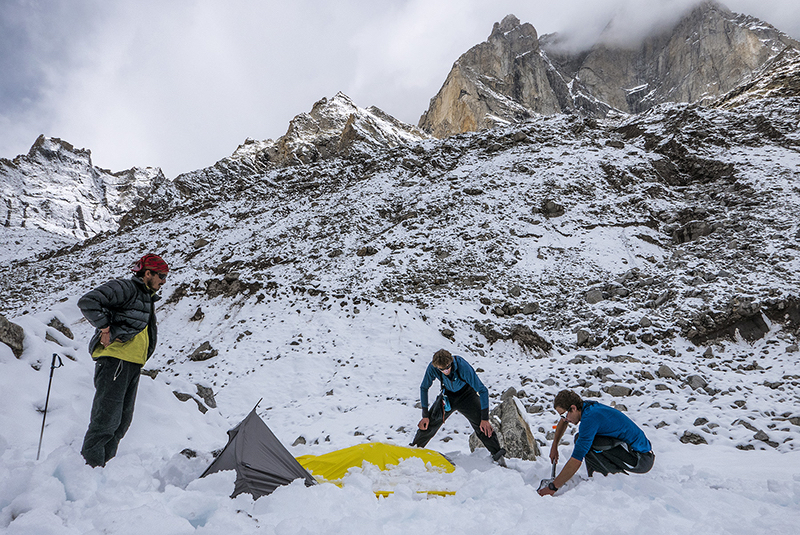
Broken tent and wet equipment in ABC (foto: Marko Prezelj)
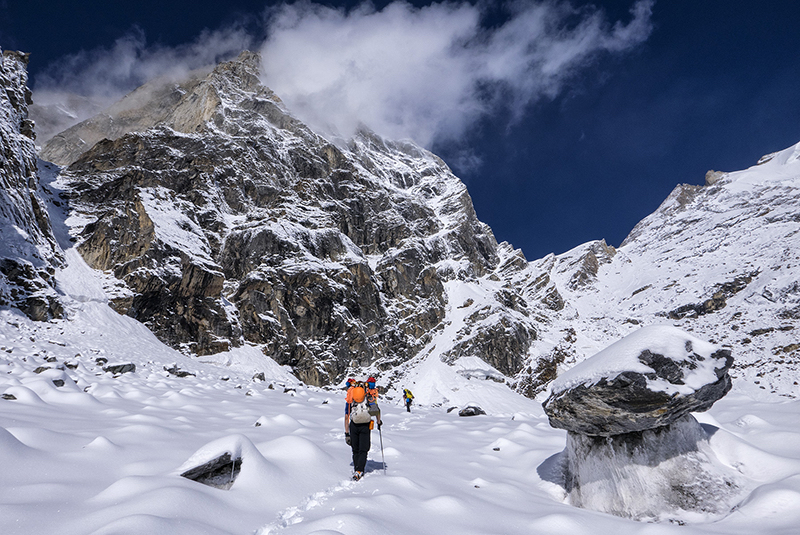
Trail braking through deep snow from ABC on (foto: Marko Prezelj)
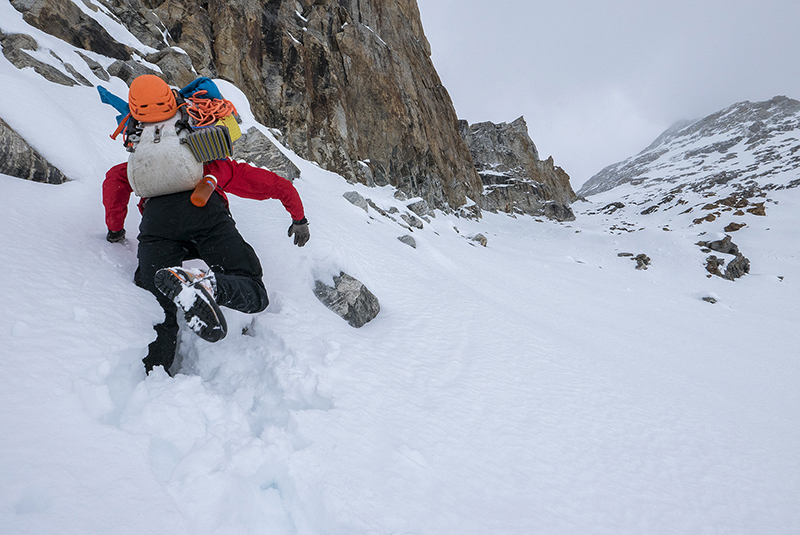
Slower progress than expected because of hard conditions (foto: Marko Prezelj)
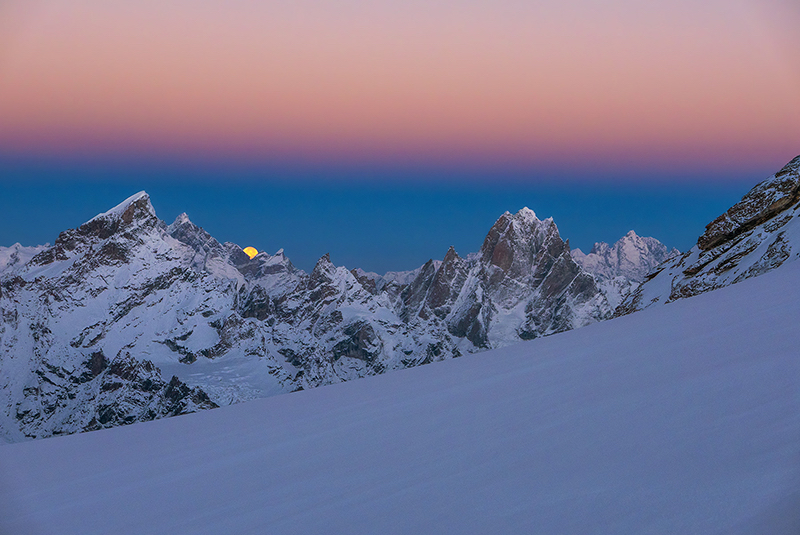
Cold and clear morning after a snovy night spent on a wide pass between Cerro Kishtwar and Chomochior (foto: Marko Prezelj)
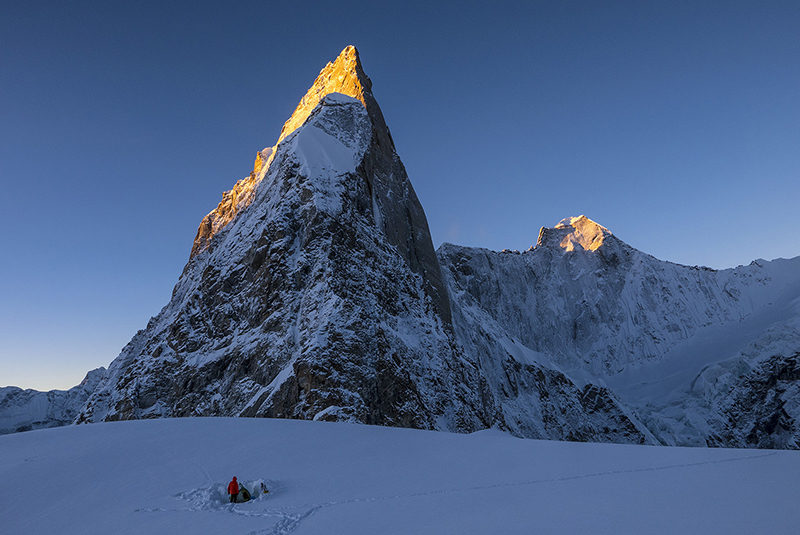
Departure got delayed to late morning due to impressive surroundings (foto: Marko Prezelj)
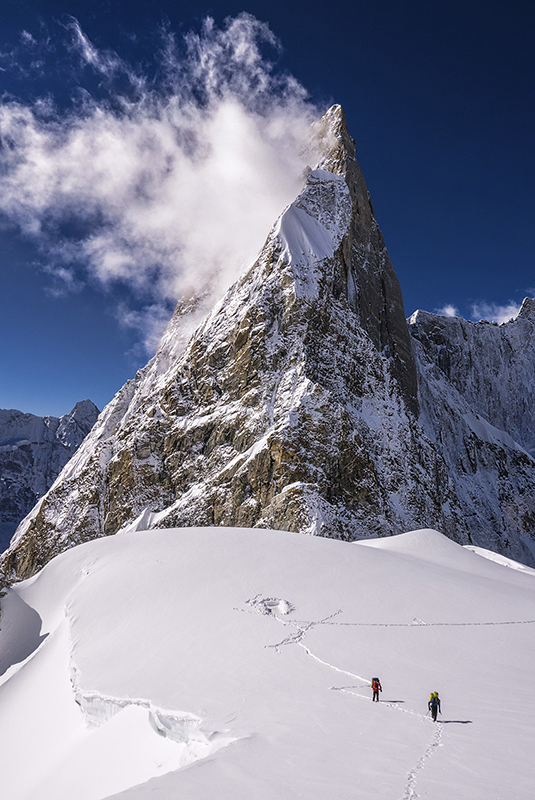
Departure got delayed to late morning due to impressive surroundings (foto: Marko Prezelj)
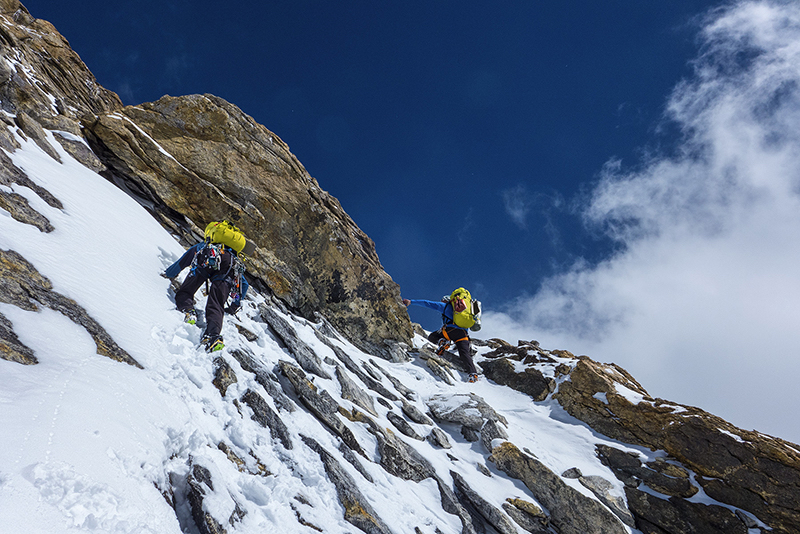
Searching for the easiest passages on the South Ridge of Chomochior (foto: Urban Novak)

Searching for the easiest passages on the South Ridge of Chomochior (foto: Marko Prezelj)

Searching for the easiest passages on the South Ridge of Chomochior (foto: Marko Prezelj)
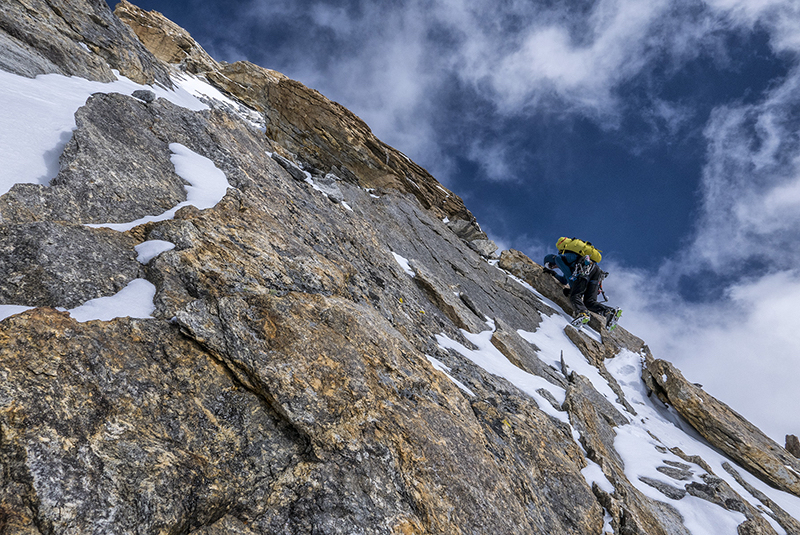
Searching for the easiest passages on the South Ridge of Chomochior (foto: Marko Prezelj)
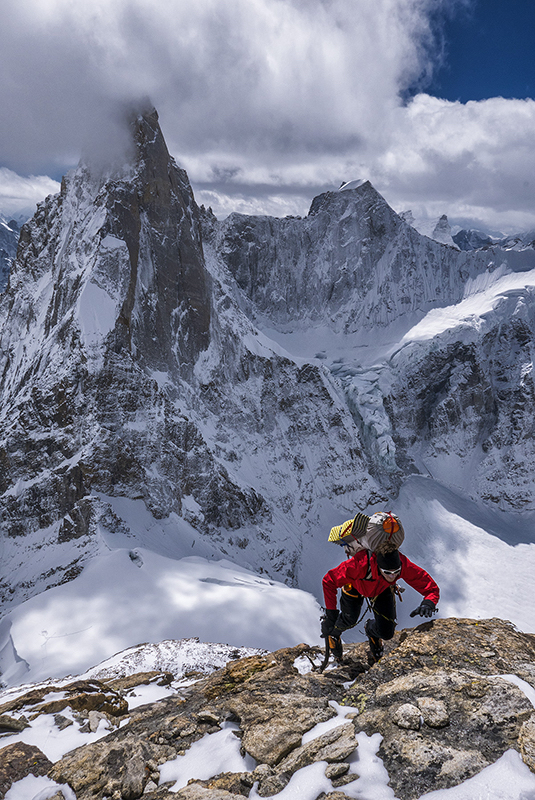
Searching for the easiest passages on the South Ridge of Chomochior (foto: Marko Prezelj)

The upper part of the Ridge is very expossed and technically difficult on some parts (foto: Marko Prezelj)
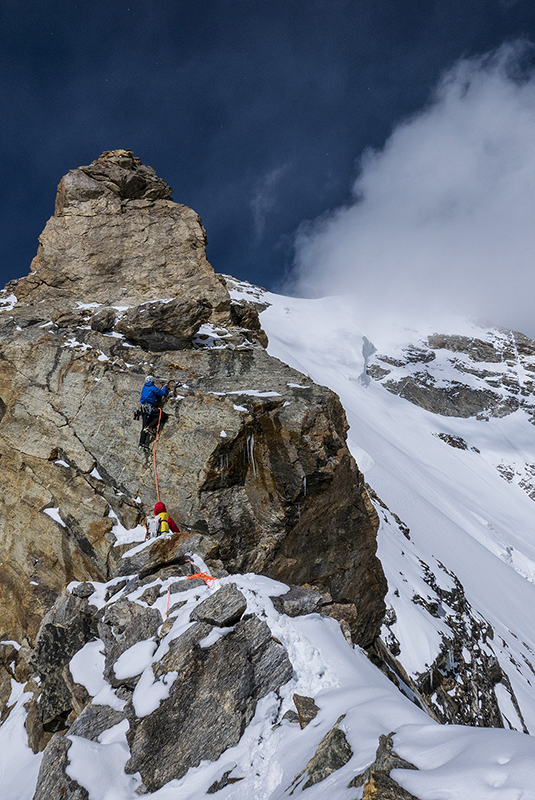
The upper part of the Ridge is very expossed and technically difficult on some parts (foto: Marko Prezelj)
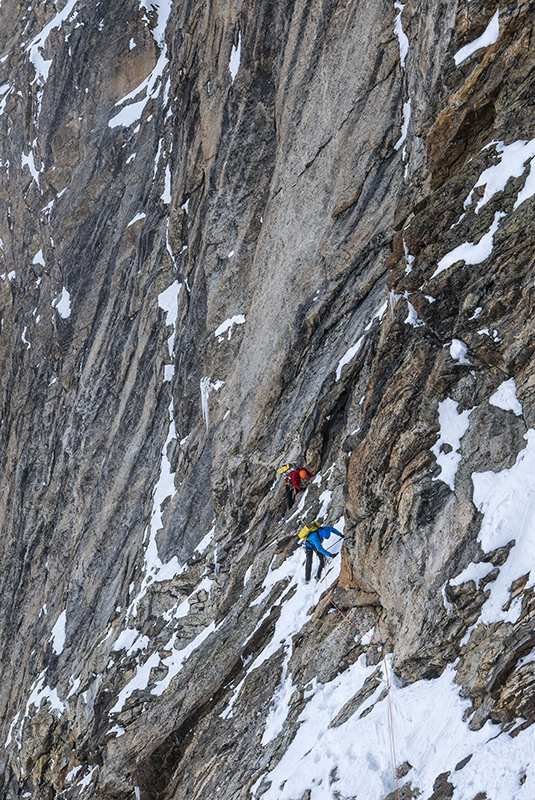
Three short rappels to bypass sharp gendarmes (foto: Marko Prezelj)

Climbed to the end of snow-covered rock ridge by the evening (foto: Urban Novak)

Second bivy at aproximatelly 5900 m (foto: Marko Prezelj)
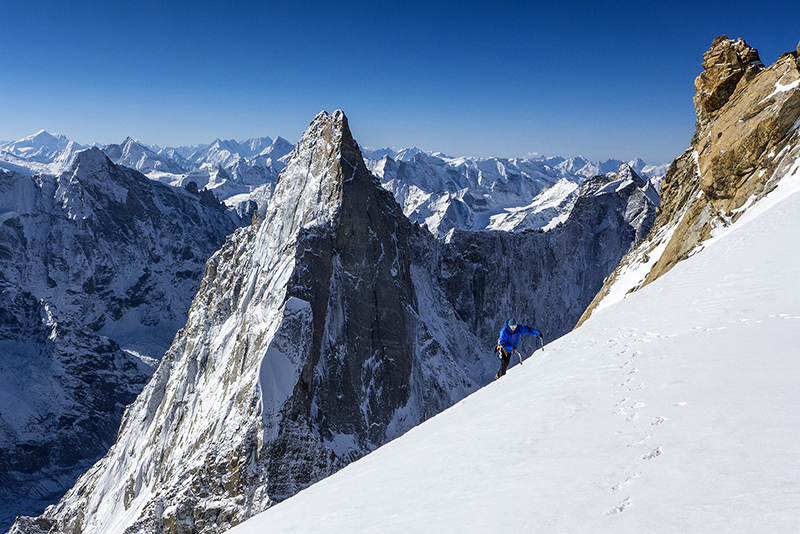
Next morning to the summit of Chomochior without bivy equipment (foto: Marko Prezelj)
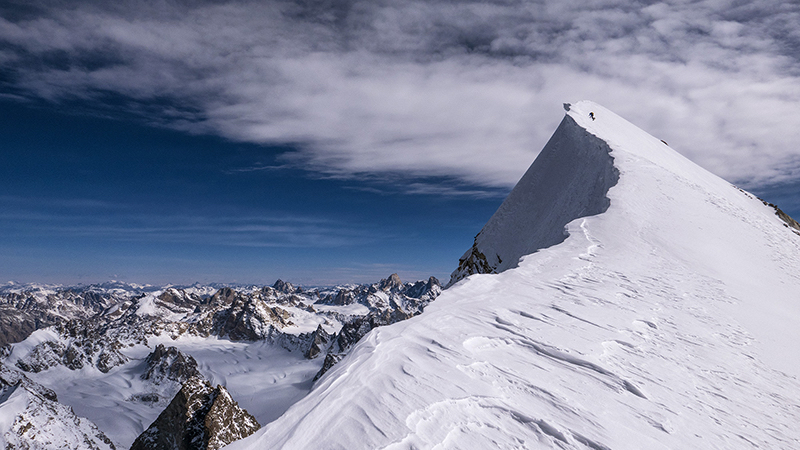
Summit of Chomochior (6278 m) was reached around 11 a.m. in quite good conditions (foto: Marko Prezelj)
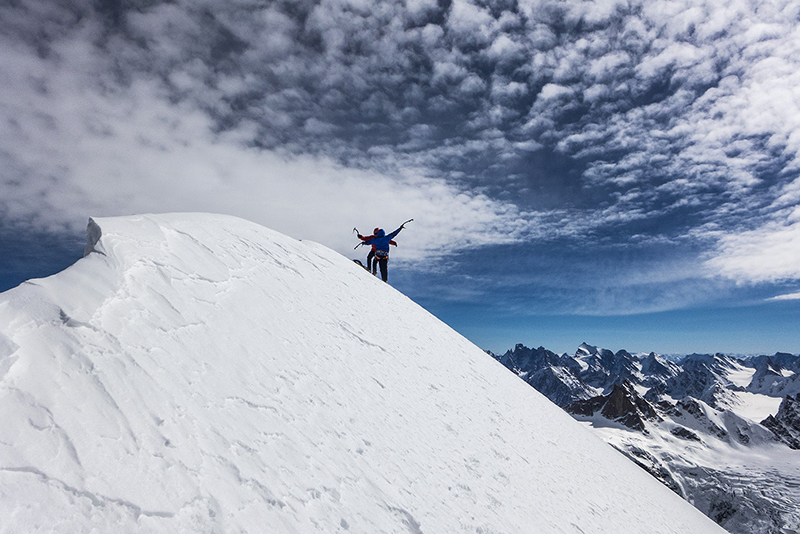
On top of Chomochior (6278 m) (foto: Urban Novak)
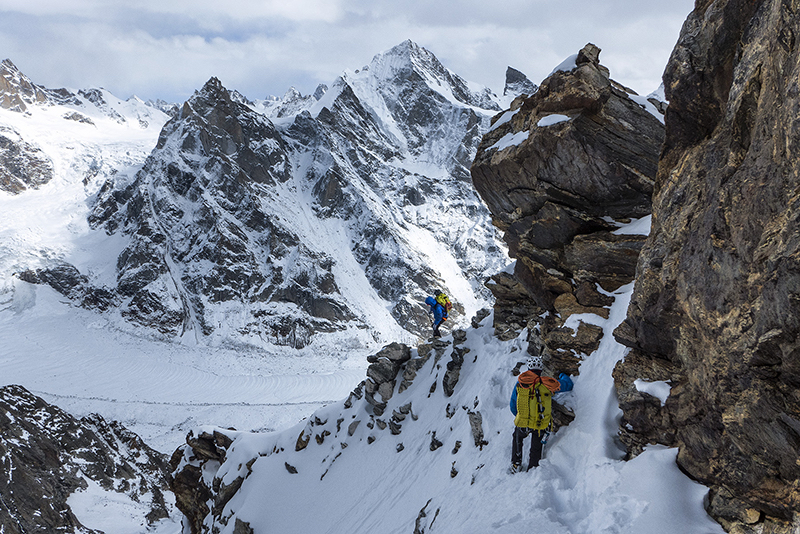
Descending the east slopes of Chomochior (foto: Urban Novak)
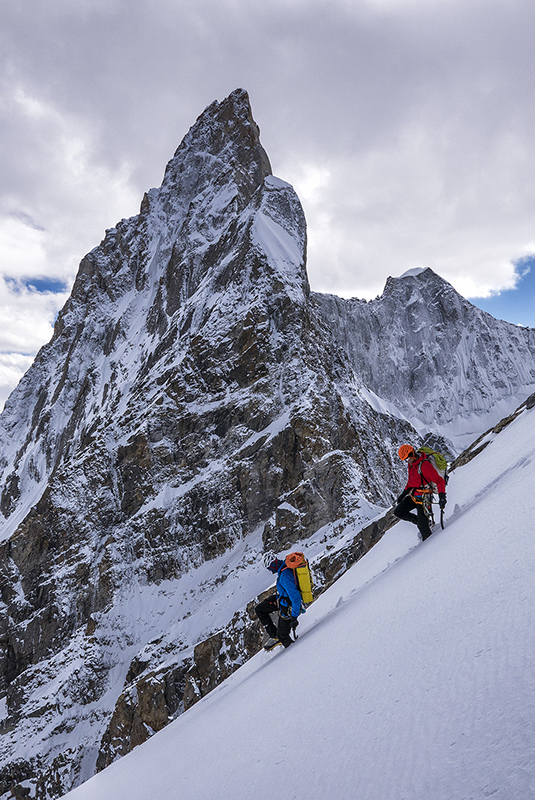
Descending the east slopes of Chomochior (foto: Marko Prezelj)
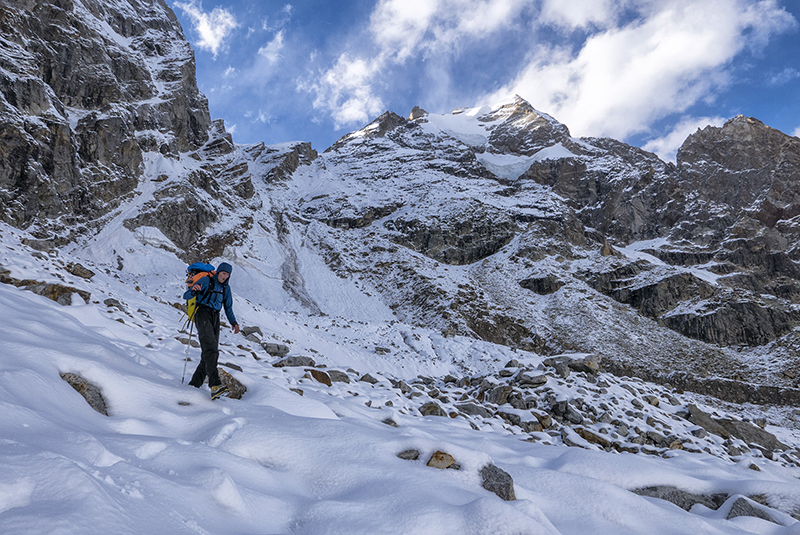
Descending from the of Chomochior (foto: Marko Prezelj)
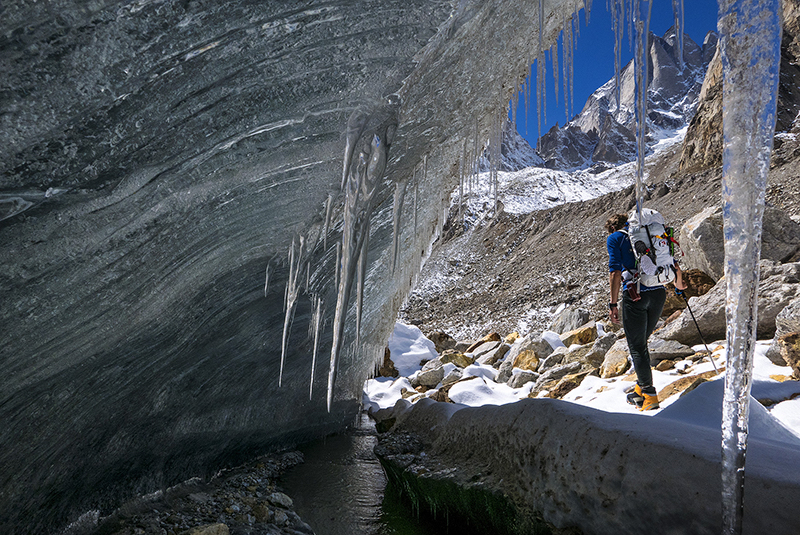
Descent to the base camp the following day (foto: Marko Prezelj)
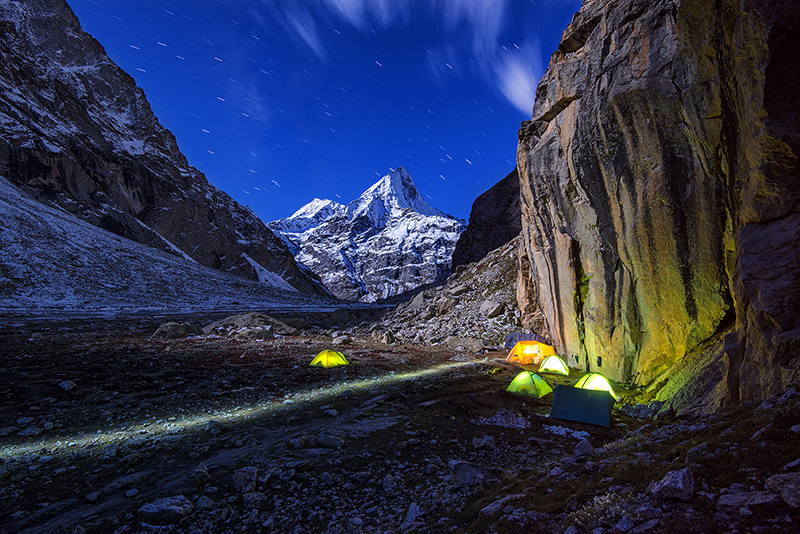
Descent to the base camp the following day (foto: Marko Prezelj)
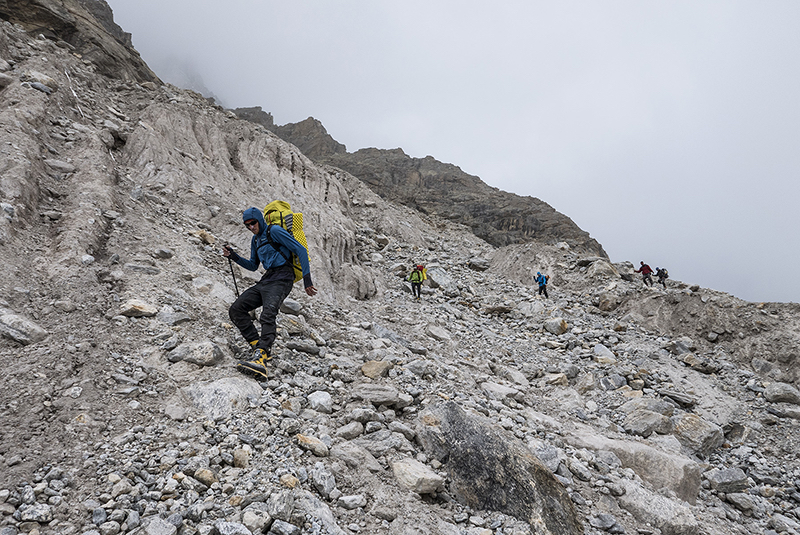
After three days of rest back on the way to ABC and forward to base of Cerro Kishtwar (foto: Marko Prezelj)
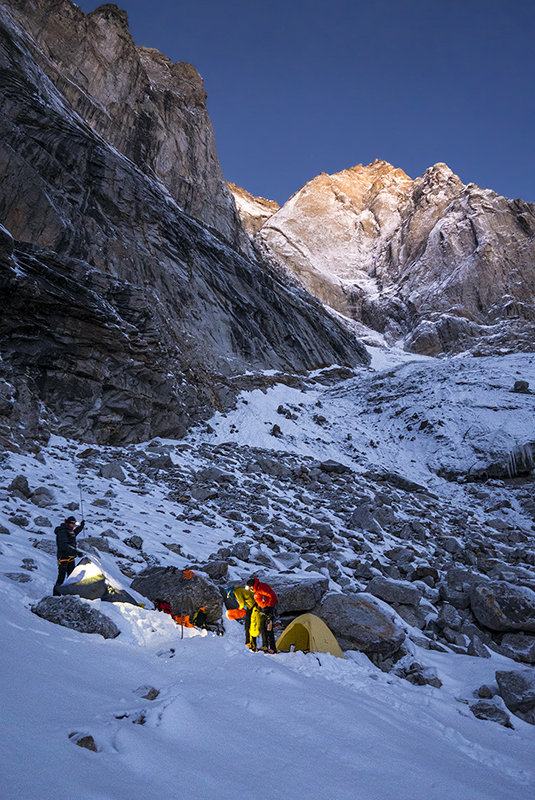
Spending the night at the base of Cerro Kishtwar’s East Face and morning accent to a freshly snowed wall (foto: Marko Prezelj)
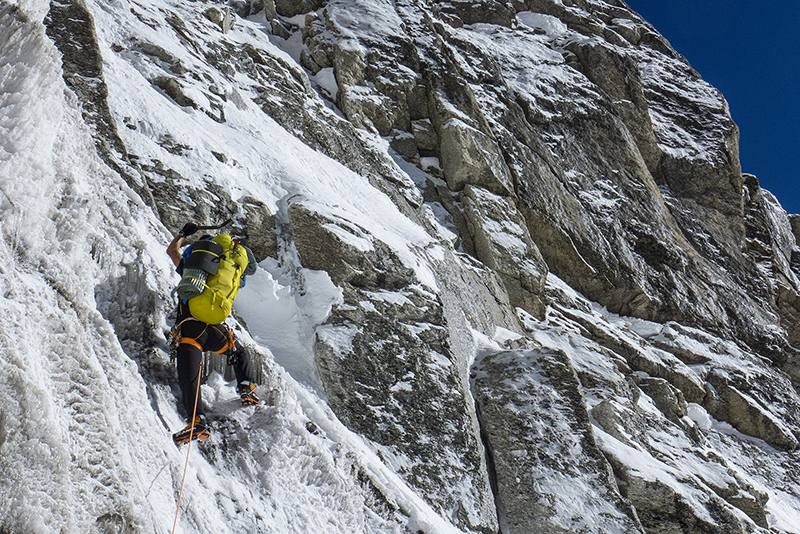
Climbing on the Cerro Kishtwar’s East Face (foto: Urban Novak)
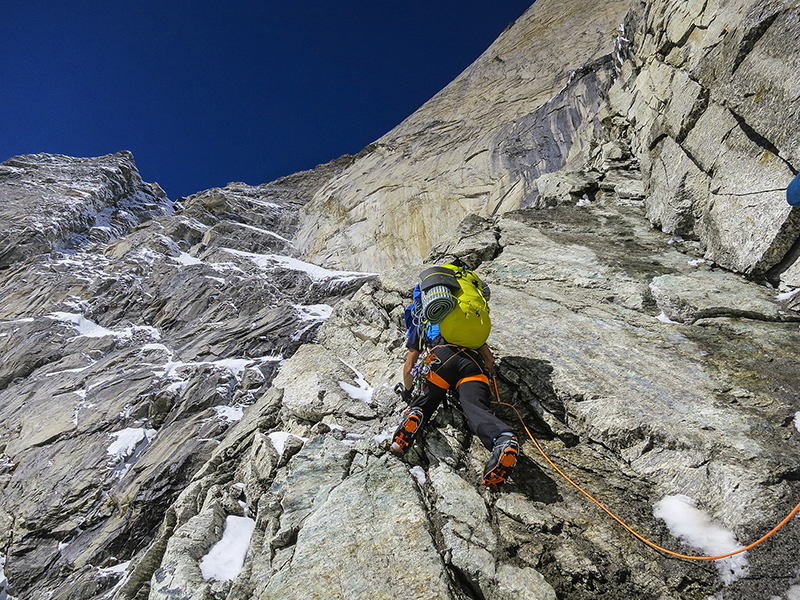
Climbing on the Cerro Kishtwar’s East Face (foto: Hayden Kennedy)
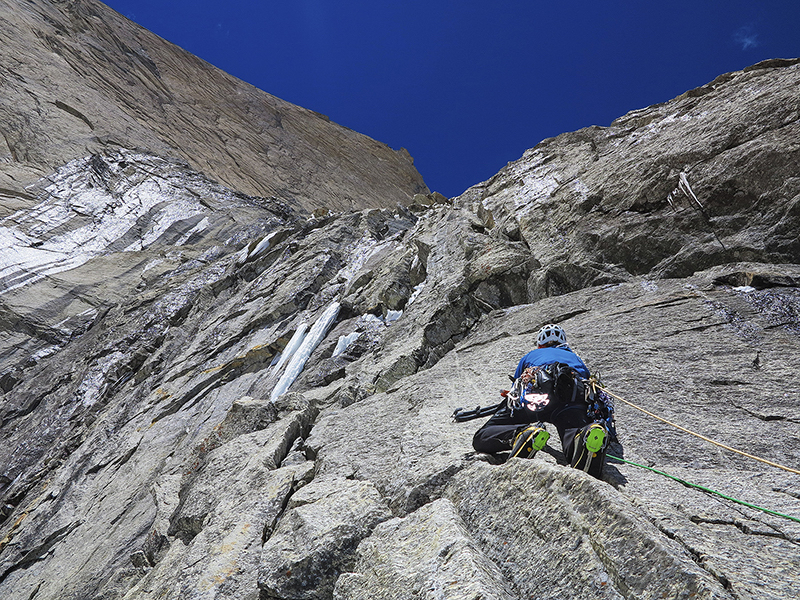
Climbing on the Cerro Kishtwar’s East Face (foto: Manu Pellissier)
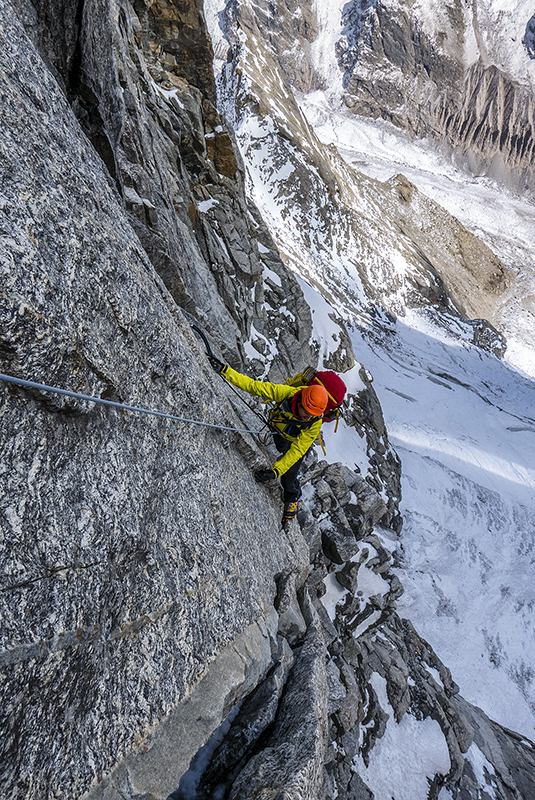
Climbing on the Cerro Kishtwar’s East Face (foto: Marko Prezelj)

Climbing on the Cerro Kishtwar’s East Face (foto: Marko Prezelj)
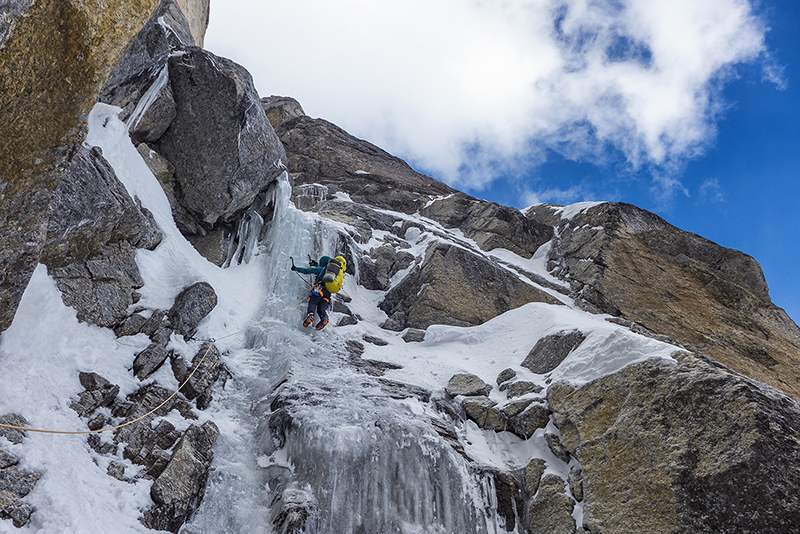
Climbing on the Cerro Kishtwar’s East Face (foto: Urban Novak)
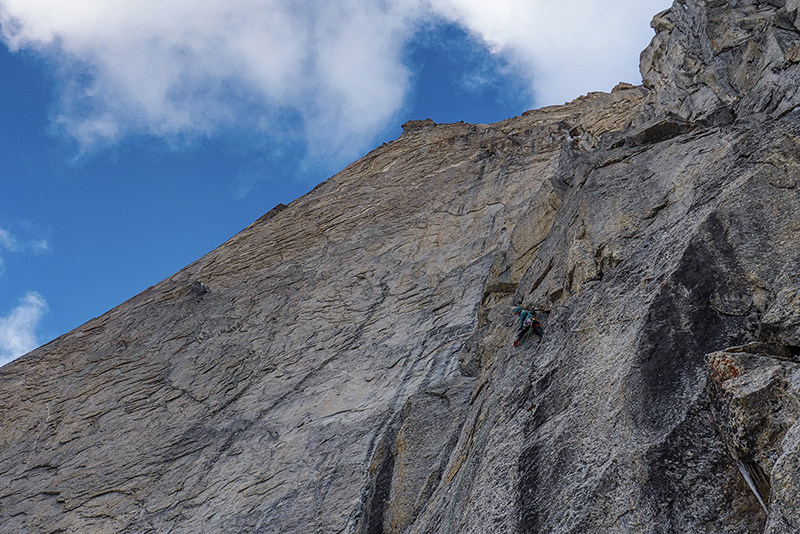
Last two rocky pitches before bivy (foto: Urban Novak)
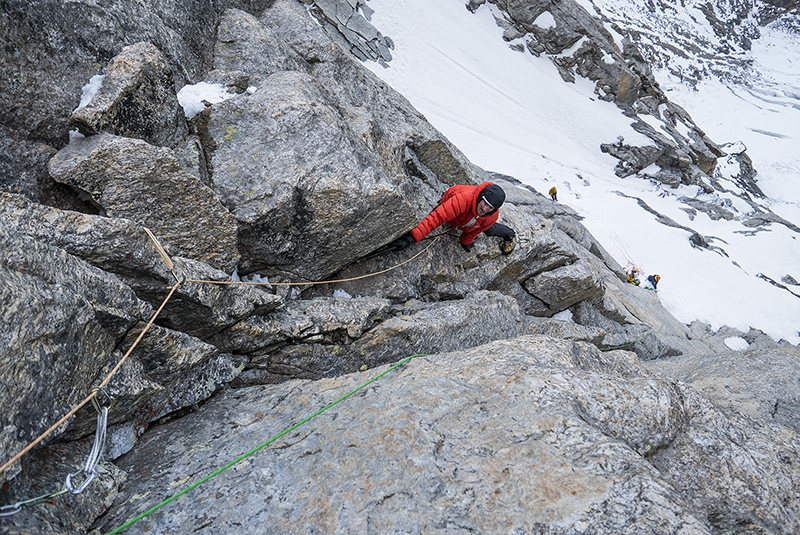
Last two rocky pitches before bivy (foto: Marko Prezelj)
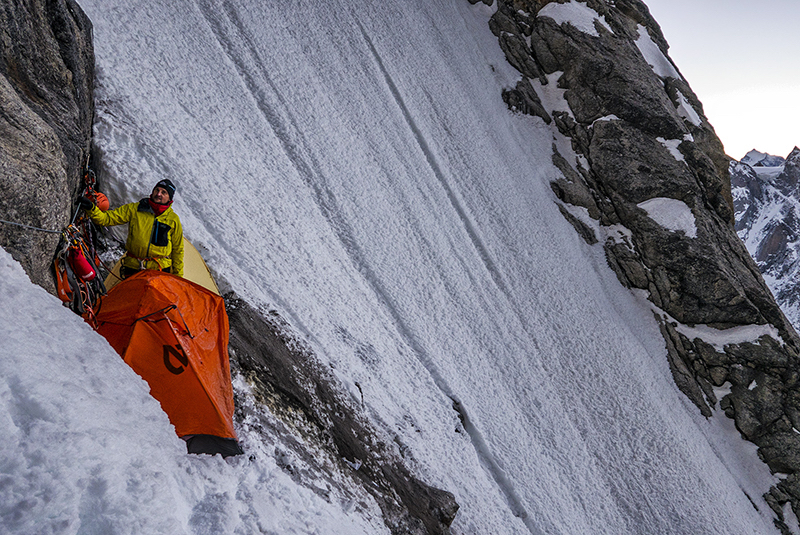
“Cosy” bivy under clear sky on Cerro Kishtwar’s East Face (foto: Marko Prezelj)
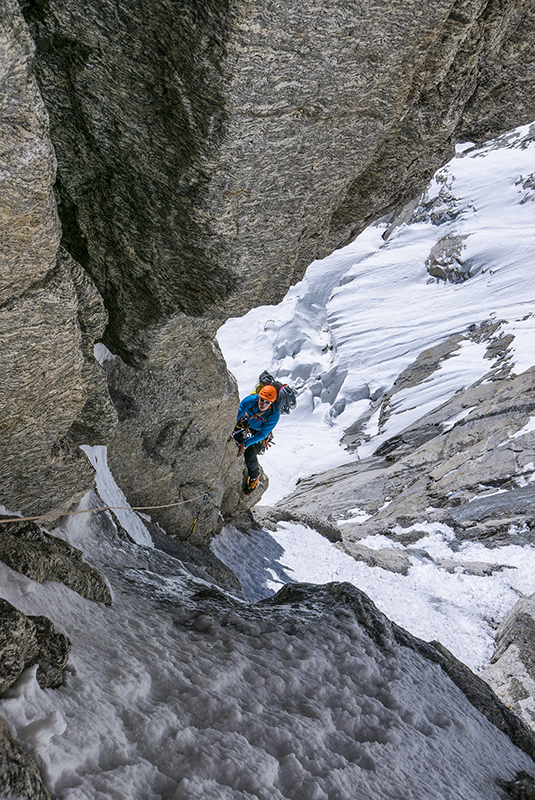
Morning warm-up, ascending the ropes, that were fixed the evening before (foto: Marko Prezelj)
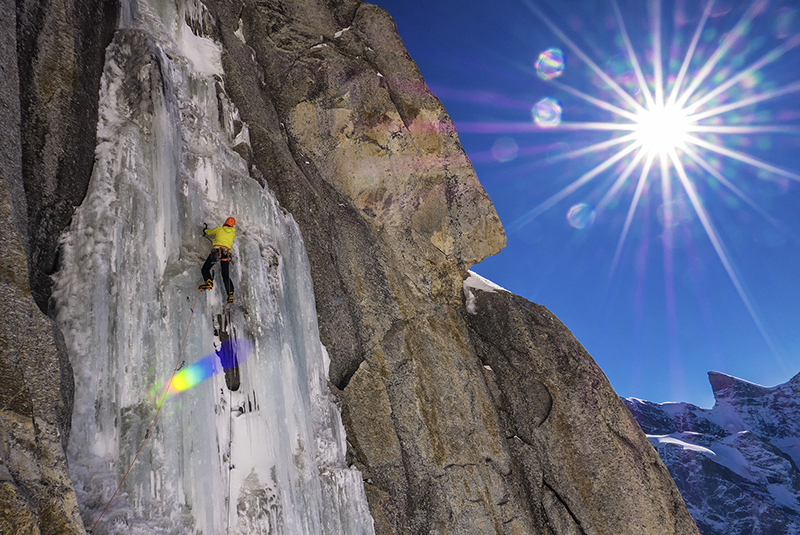
Continuing climbing on a steep and sun-softened ice (foto: Marko Prezelj)
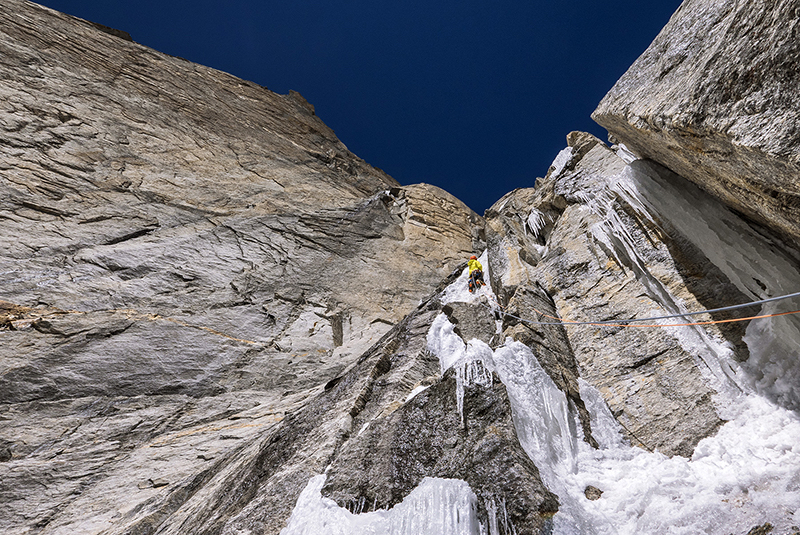
Continuing climbing on a steep and sun-softened ice (foto: Marko Prezelj)
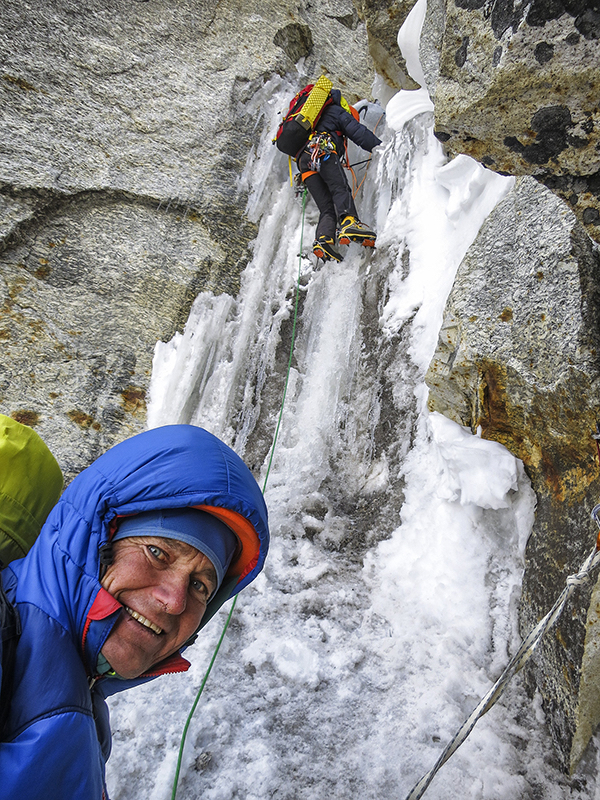
Changing steep ice and mixed climbing (foto: Hayden Kennedy)

Short night spent on a digged out snovy ledge on Cerro Kishtwar’s East Face (foto: Marko Prezelj)
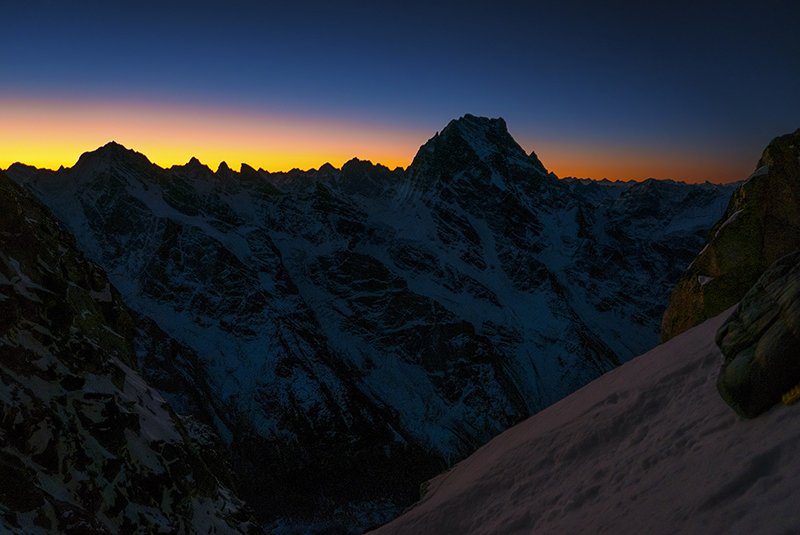
New morning, high up the Cerro Kishtwar’s east face (foto: Marko Prezelj)
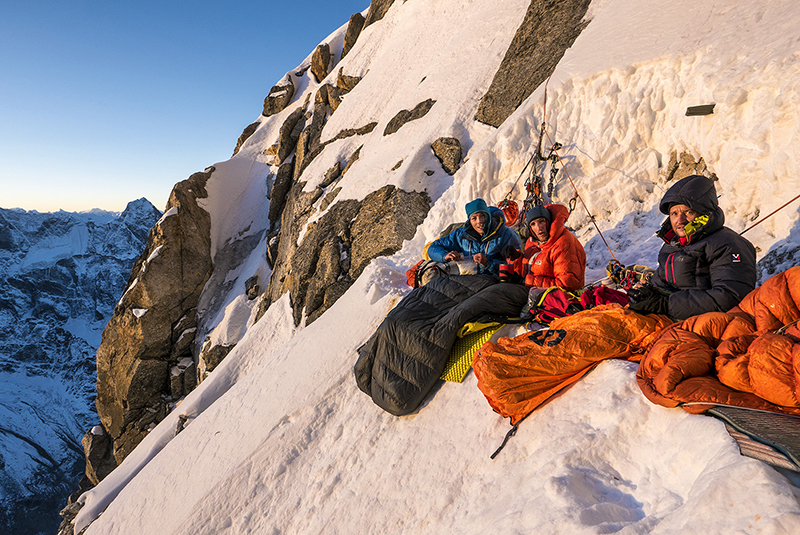
Manu was the most happy for the new morning, because he had brought a super-light sleeping bag “for summer camping by the seaside” (foto: Marko Prezelj)
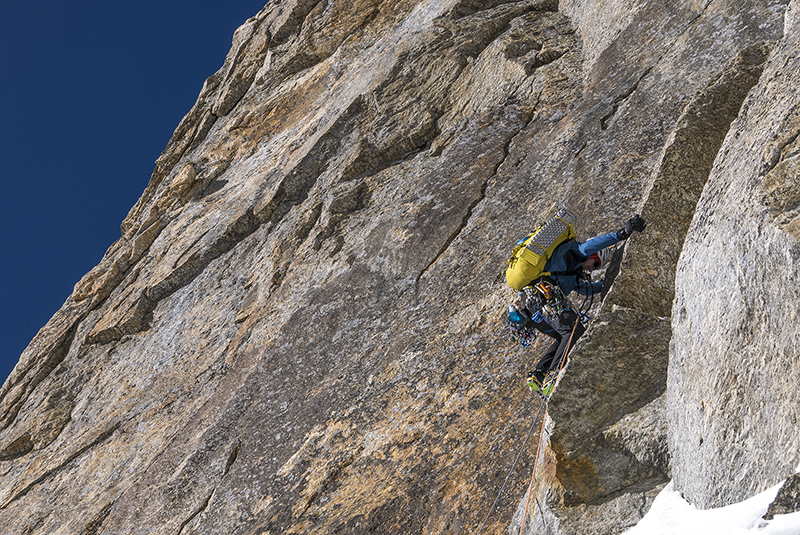
Wide crack… (foto: Marko Prezelj)
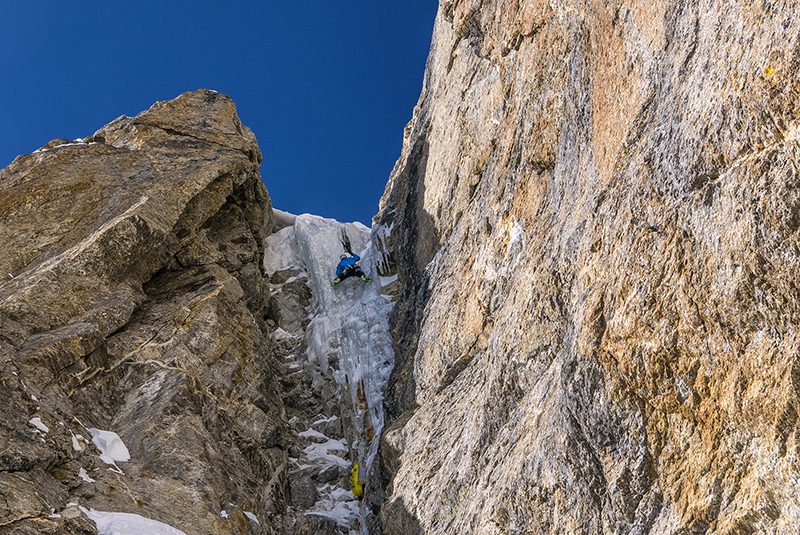
…and a steep ice chimney got us to the point where the route ahead became less clear (foto: Marko Prezelj)
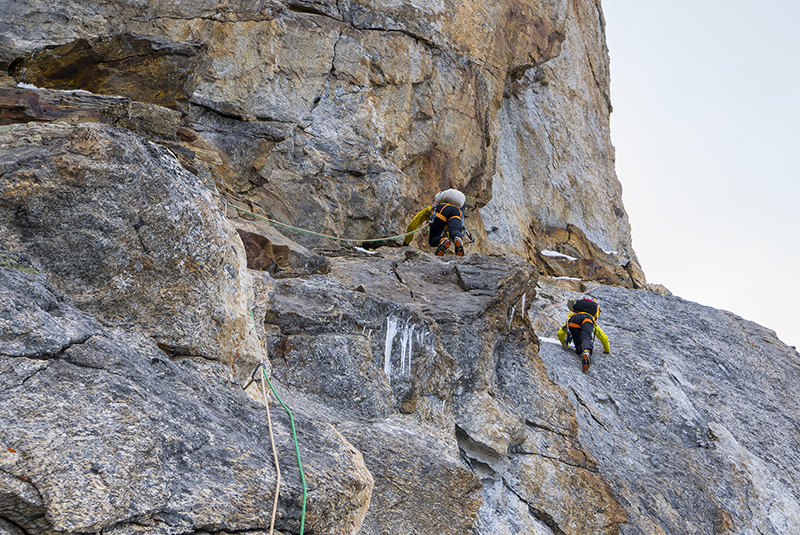
Passage diagonally right led to the north-east aspect of Cerro Kishtwar where we were confronted with a lot of fresh snow (foto: Marko Prezelj)
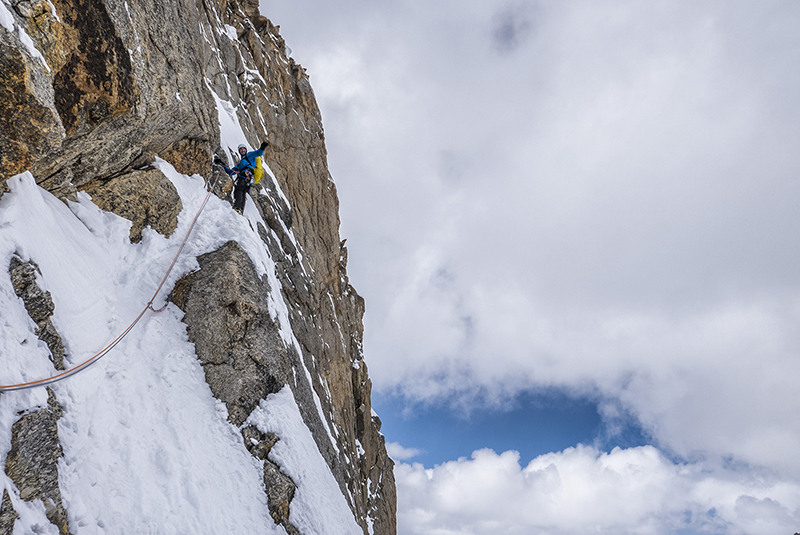
Belay point on freshly snowed north-east wall (foto: Marko Prezelj)

Marko. A man of action. Thirty metres of complex slabs covered with piles of fresh snow, and still a raised thumb followed (foto: Urban Novak)
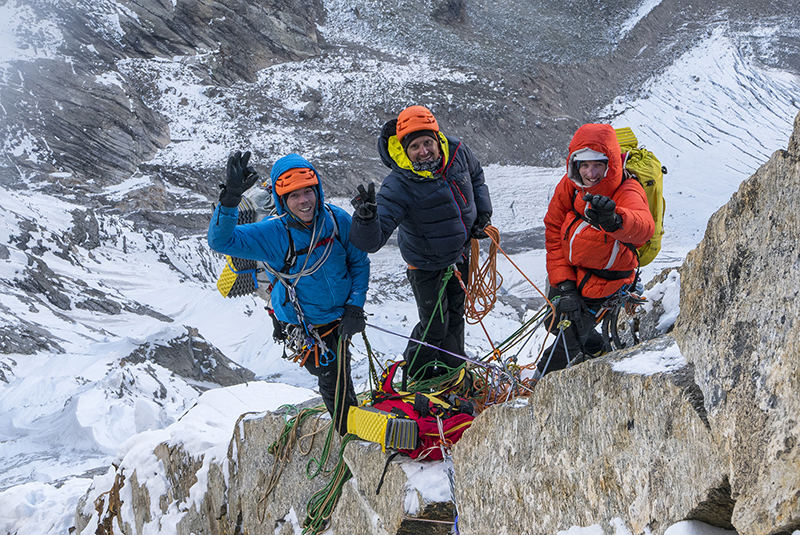
Happy Urban, Manu and Hayden (foto: Marko Prezelj)
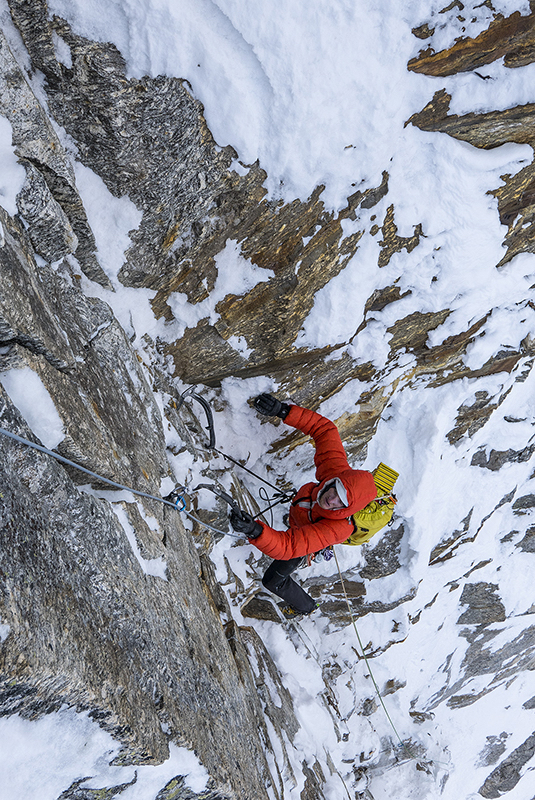
Powdery snow made sure that the climbing continued far into the night (foot: Marko Prezelj)
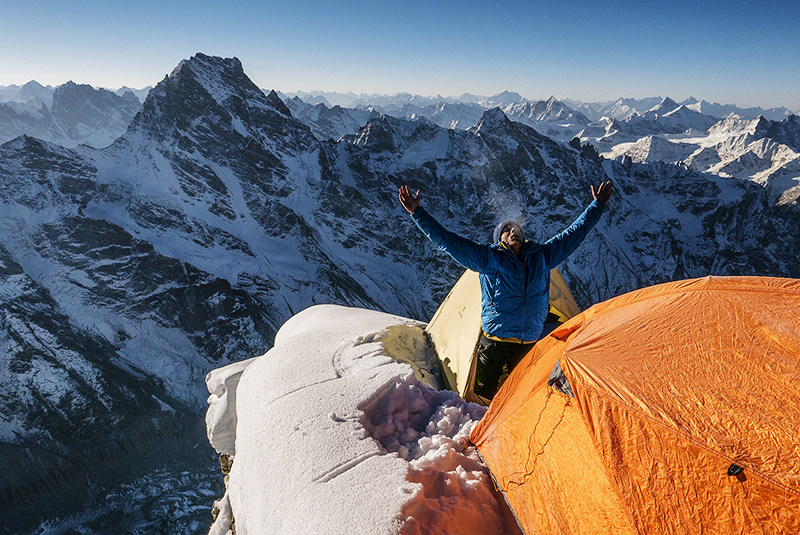
A morning on the summit of Cerro Kishtwar (foto: Marko Prezelj)
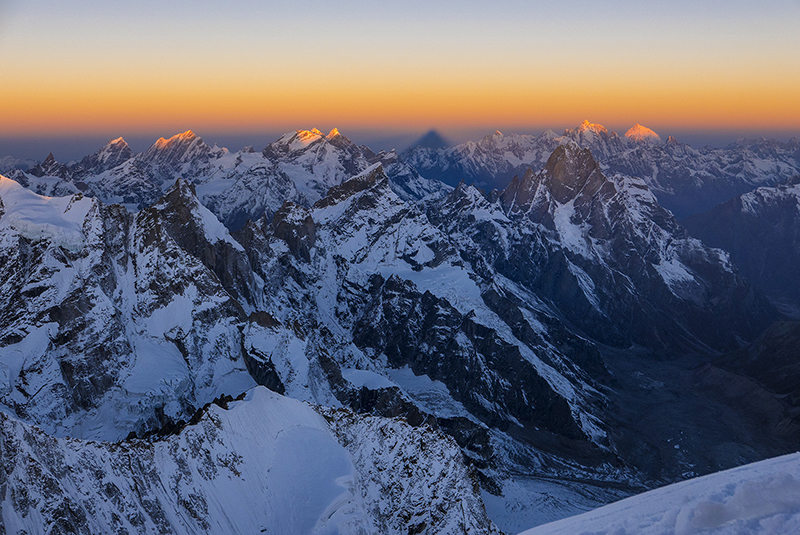
The view from Cerro Kishtwar with spectacular peaks in any direction (foto: Marko Prezelj)
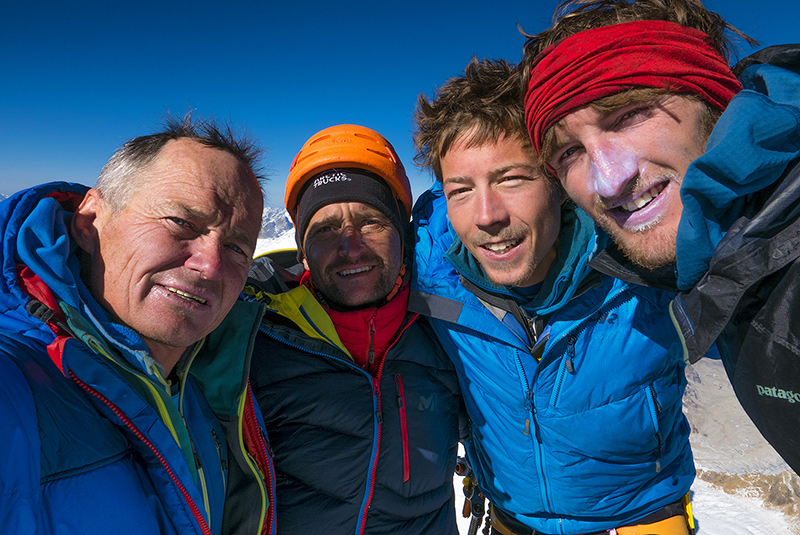
Marko Prezelj, Manu Pellissier, Urban Novak and Hayden Kennedy on the summit of spectacular Cerro Kishtwar (foto: Marko Prezelj)
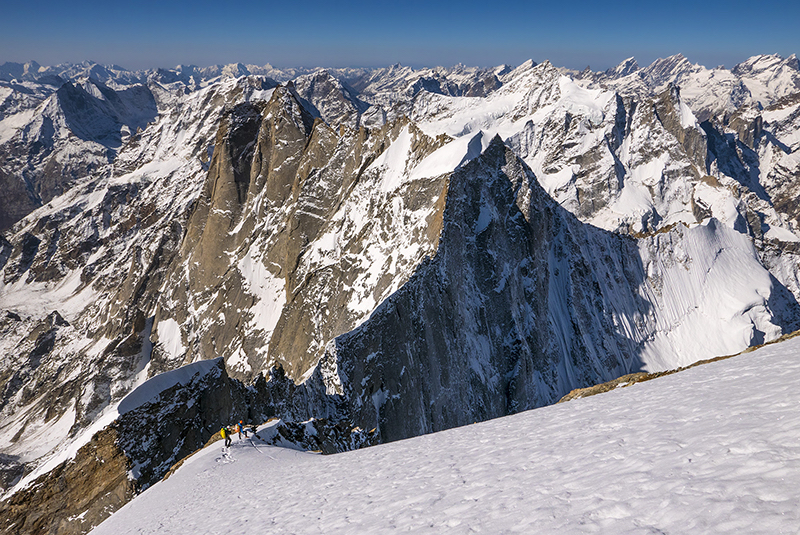
Descent from Cerro Kishtwar (foto: Marko Prezelj)

Rappelling down the couloir on the left side of East Face (foto: Marko Prezelj)
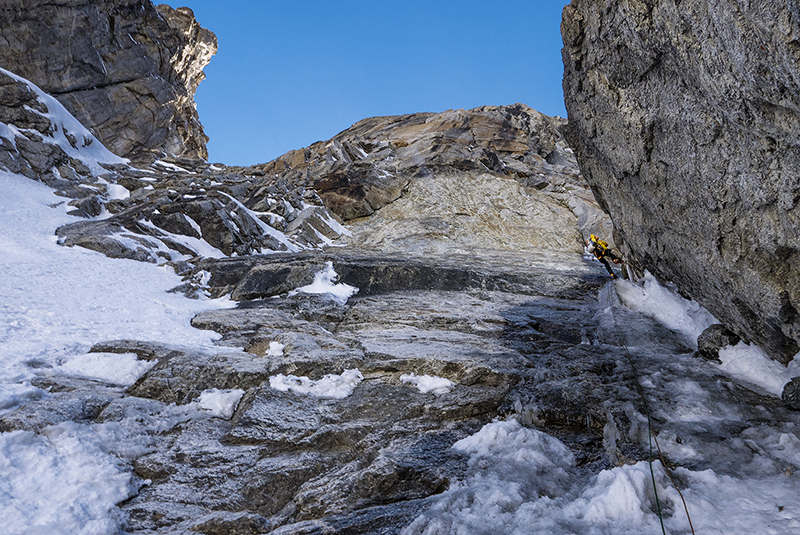
Due to warm weather in the last three days, the descend looked more like canyoning than rappelling from an ice route on a six-thousander (foto: Marko Prezelj)
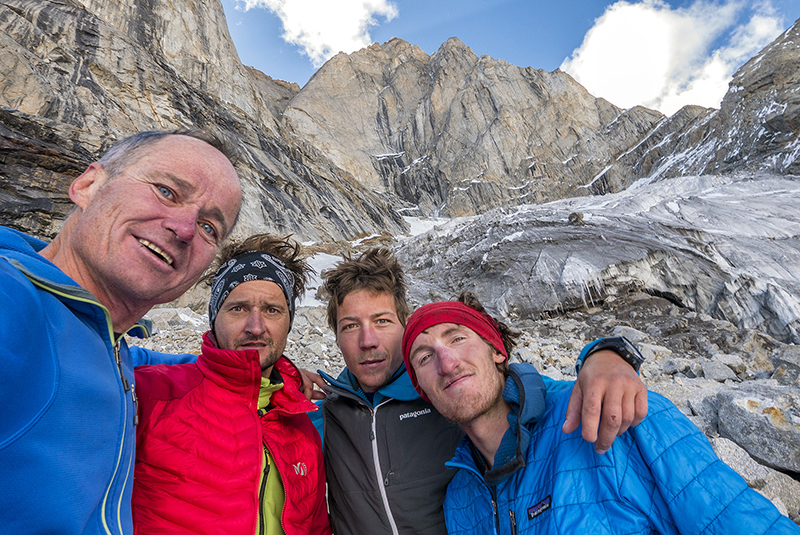
Happy alpinists at the base of Cerro Kishtwar’s East Face (foto: Marko Prezelj)
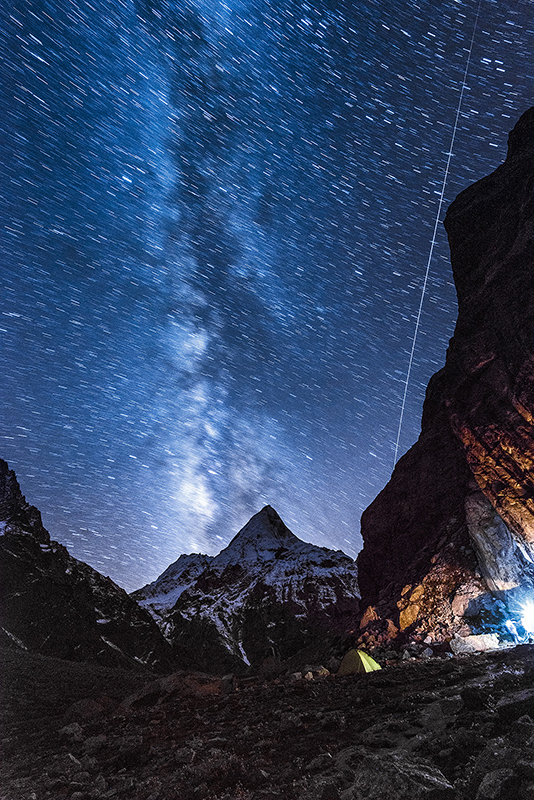
The same night back in base camp (foto: Marko Prezelj)
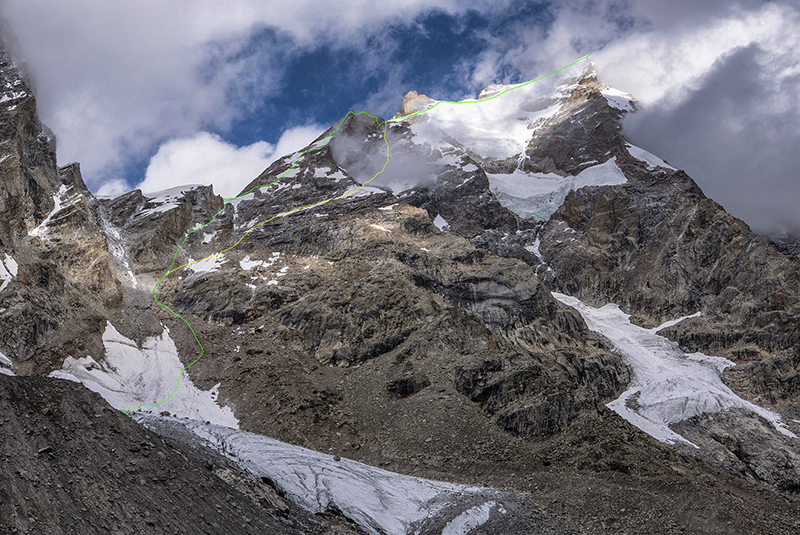
New route and second ascent of Chomochior (6278 m) via South Ridge (foto: Marko Prezelj)
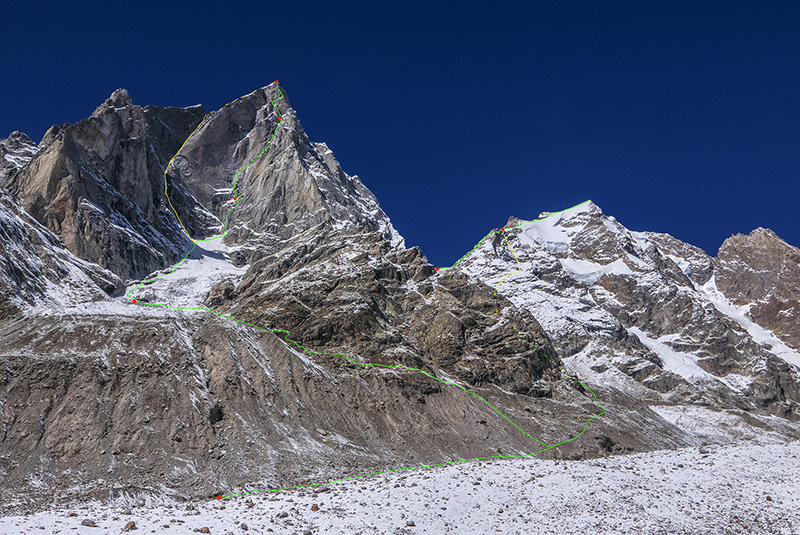
New route and second ascent of Chomochior (6278 m) via South Ridge (right) and a new route up the east face of Cerro Kishtwar (6173 m) (left) (foto: Marko Prezelj)
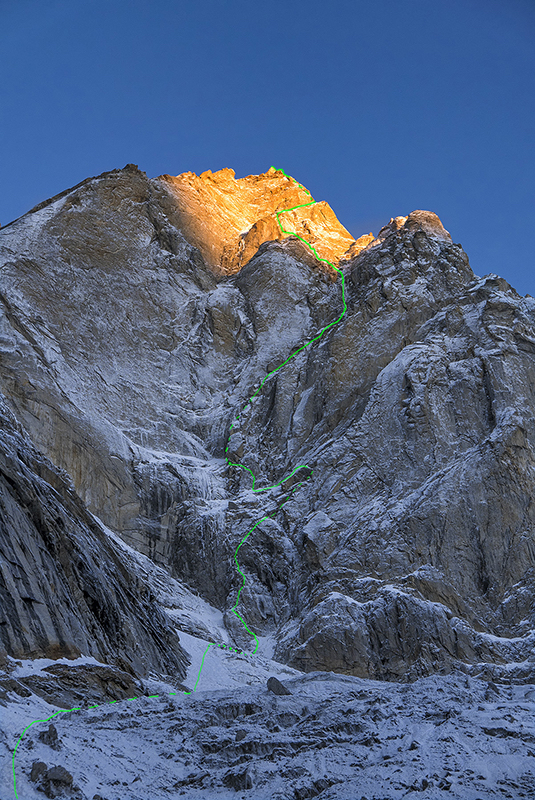
First ascent of Cerro Kishtwar’s east face via new route Light before wisdom (6173 m) (foto: Marko Prezelj)

First ascent of Cerro Kishtwar’s East Face via new route Light before wisdom (6173 m) (foto: Marko Prezelj)
Thank you:


